

Essay Writing
Essay generator.
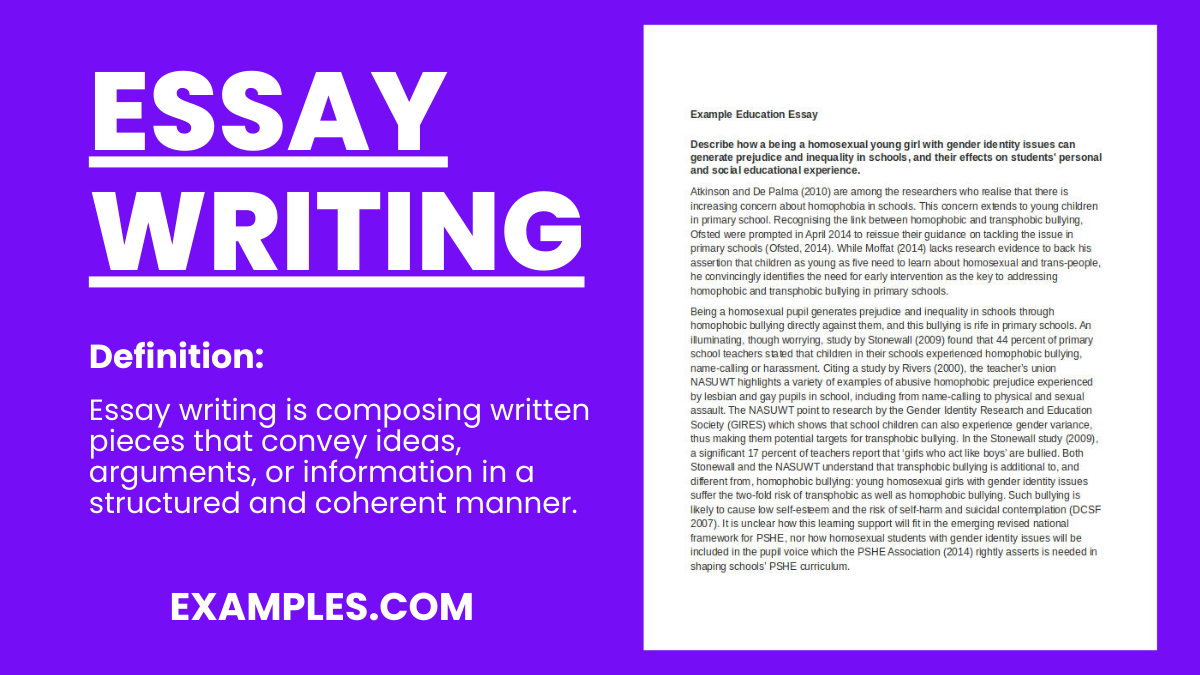
Writing an essay isn’t exactly the most entertaining thing to do with your time. Correct grammar , punctuation , and spelling are essential writing skills to be observed in order to create a good essay. Some may even consider this a dreadful task to be done, spending hours on end just to form something worth reading.
Although for others, it’s as easy as pie. They see it as a hobby or a career path, taking on part-time jobs in freelance writing . However, the ability to write good and effective short essays isn’t a skill you are born with. It is commonly developed through experience and constant practice. Writing a compelling essay requires dedication and refinement over time.
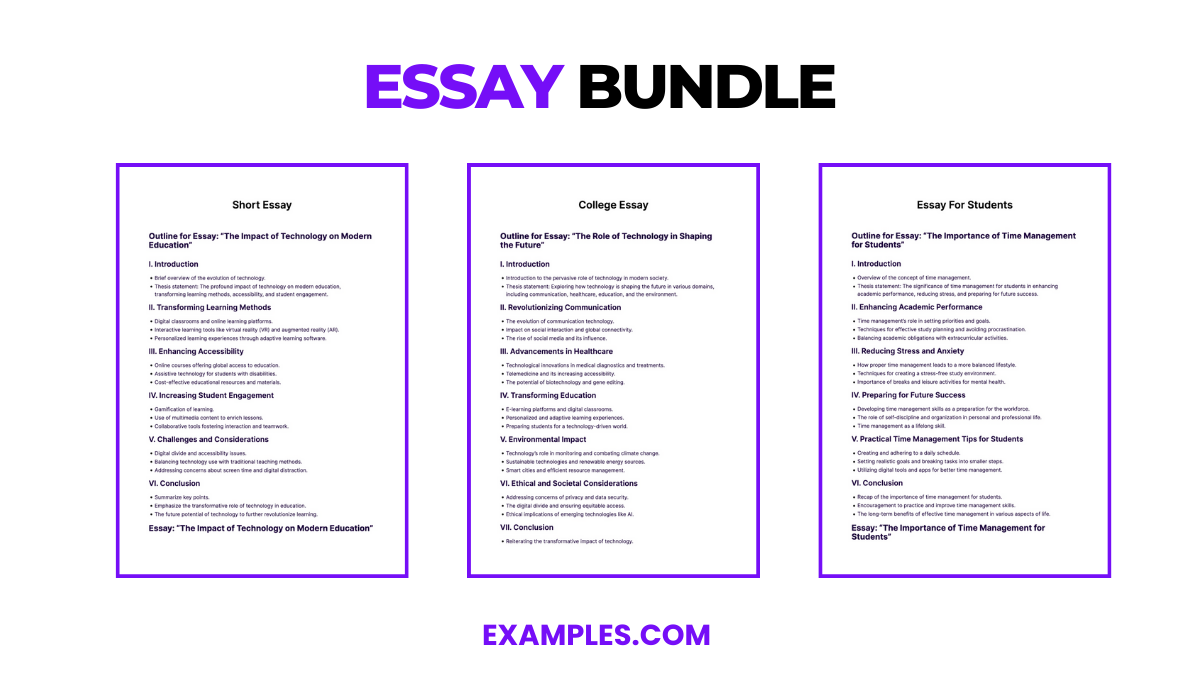
Download Essay Bundle
What is Essay Writing?
Essay writing is the process of creating a structured piece of writing that presents ideas, arguments, or reflections on a specific topic. It’s a common form of academic assignment, often used in schools and universities to assess a student’s understanding and expression of various subjects. Essay writing helps students develop critical thinking and writing skills, enabling them to articulate their thoughts and ideas clearly and logically.
Structure/Format of Essay Writing
An essay typically starts with an introduction that introduces the topic and states the main point or thesis. The body, consisting of several paragraphs, each focuses on a specific idea or argument supporting the thesis, with evidence or examples. The essay concludes with a summary that reiterates the main points and restates the thesis, leaving the reader with a final thought. This structure helps organize ideas clearly and logically, making the essay easy to follow and understand.
Introduction
An introduction in essay writing serves as the opening paragraph that introduces the topic, provides context, and outlines the essay’s purpose, setting the stage for the main arguments and thesis statement.
Purpose: Introduces the topic, sets the tone, and presents the thesis statement. Key Elements: Engaging opening sentence, background information, thesis statement.
Body Paragraphs
A body paragraph is a section that presents a single main idea, supports it with evidence, and elaborates on it to strengthen the essay’s argument and structure.
Purpose: To develop and support the thesis statement. Structure: Each paragraph should focus on a single main idea or argument. Key Elements: Topic Sentence, Supporting Details and Analysis
A conclusion in essay writing summarizes key points, restates the thesis, and provides a final perspective, leaving a lasting impression.
Purpose: Summarizes the essay and reinforces the thesis statement. Key Elements: Summary of Main Points, Restatement of Thesis and Final Thoughts
10 Essay Writing Topics, Ideas with Samples (Copy & Paste)
1. the impact of technology on society.
Introduction: Technology has become an integral part of our daily lives, revolutionizing the way we communicate, work, and live. This essay explores the profound impact of technology on society, delving into both the positive advancements and the challenges it presents.
1. Advancements in Communication: Technology has transformed communication, breaking down geographical barriers and connecting people across the globe. Social media platforms, messaging apps, and video conferencing have revolutionized how we interact, fostering global communities and enabling instant information exchange.
2. Economic Transformation: The rise of the internet and e-commerce has reshaped the business landscape. Online marketplaces, digital payment systems, and automation have streamlined transactions and enhanced efficiency. However, the digital divide remains a concern, with disparities in access and opportunities between different socioeconomic groups.
3. Education and Learning: Technology has revolutionized education, providing access to a vast array of information and online courses. E-learning platforms offer flexible learning opportunities, making education more accessible to diverse learners. However, challenges such as information overload and the need for digital literacy skills persist.
4. Healthcare Innovations: Technological advancements in healthcare have led to improved diagnostics, treatment options, and patient care. Telemedicine facilitates remote consultations, enhancing healthcare accessibility. Artificial intelligence and data analytics have revolutionized medical research and personalized medicine, leading to breakthroughs in various fields.
5. Social Impact and Relationships: The pervasive use of technology has raised concerns about its impact on social relationships. While it facilitates connection, there are worries about the erosion of face-to-face interactions and the rise of online addiction. Balancing digital engagement with meaningful, in-person relationships has become a societal challenge.
Conclusion: In conclusion, technology’s impact on society is multifaceted, bringing both opportunities and challenges. Embracing the benefits of technological advancements while addressing issues such as digital inequality, privacy concerns, and social disconnection is crucial. Society must navigate these complexities thoughtfully to ensure that technology continues to enhance our lives without compromising fundamental human values and connections.
2. Impact of Climate Change on Our Planet
Introduction Climate change, a critical global issue, has far-reaching impacts on our planet. It refers to significant changes in global temperatures and weather patterns over time. While climate has changed throughout Earth’s history, recent decades have seen unprecedented changes, largely attributed to human activities. This essay explores the impact of climate change on various aspects of our planet, including natural ecosystems, weather patterns, human health, and economic sectors.
Impact on Natural Ecosystems One of the most visible impacts of climate change is on natural ecosystems. Rising temperatures and changing precipitation patterns are altering habitats globally. For instance, coral reefs, known as the rainforests of the sea, are experiencing widespread bleaching due to warmer oceans. Similarly, polar regions are facing melting ice, endangering species like polar bears and penguins. Forests are not immune either; increased temperatures and droughts lead to more frequent and intense wildfires, destroying vast areas and biodiversity.
Weather Patterns and Extreme Events Climate change has significantly altered weather patterns, leading to more extreme and unpredictable weather events. The frequency and severity of droughts, heatwaves, hurricanes, and floods have increased. For example, hurricanes are becoming more intense due to warmer ocean waters, and rising sea levels are exacerbating coastal flooding. These extreme events not only cause immediate destruction but also long-term economic and social challenges.
Human Health Concerns The impact of climate change on human health is increasingly evident. Higher temperatures contribute to heat-related illnesses and deaths. Changes in weather patterns also affect air quality, leading to respiratory issues. Furthermore, the spread of vector-borne diseases, such as malaria and dengue fever, is expected to increase as the climate warms, posing new health risks in regions previously unaffected.
Economic and Social Impacts Economically, climate change affects various sectors, including agriculture, fisheries, and tourism. Changes in temperature and precipitation patterns disrupt food production, leading to food insecurity. Fisheries are impacted by ocean acidification and changing marine ecosystems, affecting livelihoods and food supplies. Additionally, tourism in areas like coastal regions and mountain ski resorts faces challenges due to changing climate conditions.
Conclusion The impact of climate change on our planet is profound and multifaceted, affecting natural ecosystems, weather patterns, human health, and economic sectors. It is a global challenge that requires immediate and concerted efforts to mitigate and adapt to its effects. Addressing climate change involves reducing greenhouse gas emissions, preserving and restoring ecosystems, and developing sustainable practices. The time to act is now, to protect our planet for future generations.
3. Mental Health Awareness Among Youth
Mental health is a crucial aspect of overall well-being, especially among youth. It’s a pivotal period in life when individuals undergo significant physical, emotional, and social changes. Understanding and addressing mental health issues during these formative years are essential for fostering a healthy and productive society.
Identifying Mental Health Issues in Youth
Mental health issues can manifest in various ways, such as anxiety, depression, eating disorders, and behavioral problems. Often, these issues are misinterpreted as typical adolescent behavior, leading to a lack of proper intervention. Early identification of mental health issues is key to providing timely support and care.
Signs of Mental Health Issues
- Changes in mood or behavior
- Withdrawal from social interactions
- Declining academic performance
- Changes in sleeping or eating patterns
- Expressions of hopelessness or worthlessness
The Stigma Surrounding Mental Health
One of the biggest challenges in addressing mental health among youth is the stigma associated with it. This stigma often leads to reluctance in seeking help and discussing mental health issues openly.
Effects of Stigma
- Hesitation to seek help
- Lack of understanding from peers and adults
- Worsening of mental health conditions
Creating a Supportive Environment
Creating a supportive and understanding environment is vital in encouraging youth to speak about and seek help for their mental health issues.
Strategies for Support
- Educating teachers and parents about mental health
- Implementing mental health programs in schools
- Providing access to counseling and psychological services
- Encouraging peer support groups
The Role of Technology and Social Media
In today’s digital age, technology and social media play a significant role in youths’ lives, impacting their mental health both positively and negatively.
Impact of Digital Media:
- Social media can lead to issues like cyberbullying and unrealistic body image expectations.
- Technology can also be a tool for spreading awareness and providing access to resources.
Mental health awareness among youth is not just a necessity but an imperative for building a resilient, empathetic, and healthy society. Through education, support, and open conversations, we can empower our youth to face life’s challenges with strength and optimism. Creating an environment where mental health is prioritized and discussed openly will pave the way for a more understanding and supportive community, ensuring a brighter future for all.
4. Artificial Intelligence: Boon or Bane?
Introduction: In the realm of technology, artificial intelligence (AI) stands as a monumental innovation, reshaping how we live, work, and interact. But as with any significant technological advancement, AI’s impact on society sparks a crucial debate: Is it a boon or a bane? This essay delves into the multifaceted nature of AI, examining its benefits and challenges, ultimately aiming to provide a balanced perspective.
The Boon of AI
- Enhancement of Efficiency and Productivity AI systems excel in processing vast amounts of data rapidly, significantly outpacing human capabilities. This trait has transformed industries by streamlining operations, from manufacturing with automated robotics to healthcare where AI aids in diagnosis and treatment planning.
- Innovation in Various Fields AI fosters innovation across diverse sectors. In education, personalized learning algorithms adapt to individual student needs, enhancing the learning experience. In environmental science, AI assists in climate modeling and conservation efforts, contributing to a more sustainable future.
- Improvement in Quality of Life AI’s impact on daily life is profound. Smart home devices offer convenience and enhanced security, while AI-driven personal assistants, like voice-activated systems, simplify tasks. Moreover, AI’s role in healthcare, from robotic surgeries to predictive diagnostics, has been life-altering for many.
The Bane of AI
- Job Displacement Concerns One of the most significant fears surrounding AI is job displacement. Automation and AI systems could replace human roles, particularly in sectors like manufacturing and customer service, leading to unemployment and economic disparities.
- Ethical and Privacy Issues AI’s ability to analyze personal data raises privacy concerns. Issues like data misuse and surveillance have prompted debates on ethical guidelines and regulations. Furthermore, AI’s decision-making processes, if not transparent, can lead to ethical dilemmas in areas like law enforcement and lending.
- Dependency and Reduced Human Skill An over-reliance on AI could lead to a decline in critical human skills. For instance, excessive use of navigational AI may impair our natural sense of direction, and dependence on AI for decision-making could diminish our problem-solving abilities.
Conclusion: AI, like any powerful tool, comes with its set of pros and cons. While it offers remarkable advancements and efficiencies, it also presents significant challenges and risks. The key lies in harnessing AI’s potential responsibly, with mindful consideration of ethical implications and a balanced approach to technology integration. By doing so, we can steer AI towards being more of a boon than a bane, ensuring it serves to enhance, rather than dictate, the course of human progress.
5. Sustainable Living and Environmental Conservation
Sustainable Living and Environmental Conservation are vital concepts in today’s world, as they focus on maintaining the health of our planet for future generations. This essay explores the importance of sustainable living and the various ways in which individuals and communities can contribute to environmental conservation.
Understanding Sustainable Living
Sustainable living refers to a lifestyle that attempts to reduce an individual’s or society’s use of the Earth’s natural resources. This practice advocates for:
- Reducing Carbon Footprint : Limiting activities that contribute to carbon emissions, such as excessive use of fossil fuels.
- Conserving Water : Implementing water-saving techniques like rainwater harvesting and fixing leaks.
- Minimizing Waste : Promoting recycling, composting, and the reduction of single-use plastics.
Environmental Conservation: A Global Priority
Environmental conservation involves protecting and preserving the natural world. Its significance lies in:
- Biodiversity Protection : Ensuring the survival of diverse species and ecosystems.
- Climate Change Mitigation : Addressing global warming through sustainable practices.
- Resource Preservation : Ensuring that natural resources are available for future generations.
Implementing Sustainable Practices
Adopting sustainable habits can have a profound impact. Key practices include:
- Energy Efficiency : Using energy-saving appliances and LED lighting.
- Sustainable Transportation : Favoring walking, cycling, and public transport over individual car use.
- Eco-Friendly Products : Choosing products with minimal environmental impact, like biodegradable packaging.
Community and Global Efforts
Beyond individual actions, larger scale efforts are crucial:
- Government Policies : Implementing regulations that promote sustainability, like renewable energy incentives.
- Corporate Responsibility : Encouraging businesses to adopt sustainable practices in their operations.
- Educational Initiatives : Raising awareness about environmental issues through education and community programs.
Challenges and Future Perspectives
While the journey towards sustainability presents challenges such as economic constraints and resistance to change, the future looks promising with technological advancements and increasing global awareness. It’s essential that:
- Innovation Continues : Developing new technologies for renewable energy and sustainable agriculture.
- Collaborative Efforts Increase : Fostering partnerships between governments, businesses, and communities.
- Sustainable Values Are Cultivated : Encouraging a cultural shift towards valuing and protecting our environment.
Sustainable living and environmental conservation are not just choices, but necessities for the health and survival of our planet. It’s a collective responsibility that requires the participation of individuals, communities, and nations. By embracing sustainable practices and advocating for environmental conservation, we can ensure a healthier, more equitable, and sustainable world for future generations.
6. The Influence of Social Media on Teenagers
In the digital age, social media has become a pivotal aspect of teenagers’ lives. Its impact is profound and multifaceted, influencing various aspects of their social, emotional, and educational development. This essay explores the positive and negative effects of social media on teenagers and suggests ways to mitigate its adverse impacts.
Positive Impacts of Social Media
1. Connectivity and Socialization: Social media platforms like Facebook, Instagram, and Snapchat offer teenagers a space to connect with friends and family, fostering a sense of belonging and community. They can interact with peers from different parts of the world, learn about diverse cultures, and form new friendships.
2. Educational Resources: Platforms such as YouTube and educational blogs provide an abundance of learning materials. Teenagers can access tutorials, e-books, and online courses, aiding their academic growth and supplementing their school education.
3. Self-Expression and Creativity: Social media is a canvas for self-expression. Teenagers can share their thoughts, artwork, and achievements, receiving encouragement and feedback. This boosts their confidence and nurtures their creative talents.
Negative Impacts of Social Media
1. Cyberbullying and Peer Pressure: The anonymity and distance provided by social media can lead to cyberbullying. Teens often face pressure to conform to certain trends or behaviors, affecting their mental health and self-esteem.
2. Distraction and Academic Decline: Excessive use of social media can become a major distraction, leading to reduced concentration and a decline in academic performance. The constant need to check notifications disrupts study routines and hinders productivity.
3. Mental Health Issues: Studies have linked prolonged social media use to mental health issues like anxiety, depression, and loneliness in teenagers. The pressure to maintain a certain image and the fear of missing out (FOMO) can be overwhelming.
Mitigating the Negative Impacts
1. Educating on Digital Literacy: Schools and parents should educate teenagers about responsible social media usage. Understanding digital footprints, privacy settings, and the importance of online etiquette is crucial.
2. Encouraging Offline Interactions: Promoting real-life interactions and activities can balance online engagement. Participating in sports, clubs, and family activities helps develop social skills away from the digital world.
3. Setting Boundaries: Implementing rules on the amount of time spent on social media can be effective. Encouraging designated ‘tech-free’ times during meals or before bed can help in establishing healthy habits.
Social media’s influence on teenagers is undeniable. While it offers significant benefits in terms of connectivity, learning, and self-expression, the risks associated with cyberbullying, distraction, and mental health cannot be overlooked. By educating teenagers about the responsible use of social media and encouraging a balanced lifestyle, the negative impacts can be mitigated, harnessing its positive potential for their holistic development.
7. Equality and Diversity in the 21st Century
In the 21st century, the concepts of equality and diversity have evolved significantly, reflecting a world that is increasingly interconnected and diverse. This essay explores the importance of equality and diversity, their impact on society, and the challenges and opportunities they present in today’s global landscape.
The Importance of Equality and Diversity
Equality and diversity are foundational to a just and vibrant society. Equality ensures that every individual has an equal opportunity to make the most of their lives and talents. It is not only about treating individuals in the same way but also about recognizing and valuing differences to contribute and realize their full potential. Diversity, on the other hand, refers to the range of human differences, including but not limited to race, ethnicity, gender, gender identity, sexual orientation, age, social class, physical ability or attributes, religious or ethical values system, and national origin. Embracing diversity means understanding, accepting, and valuing differences between people.
Impact on Society
The synergy of equality and diversity has a profound impact on society. It fosters innovation and creativity by bringing together a wide range of perspectives and experiences. Organizations and societies that embrace diversity and equality tend to be more dynamic, creative, and successful. In education, a diverse and inclusive environment encourages critical thinking and exposes students to a broader range of perspectives, preparing them for global citizenship.
Challenges and Opportunities
Despite the clear benefits, achieving equality and diversity in the 21st century comes with challenges. Discrimination and inequality persist in many forms and settings. Stereotyping and prejudice can lead to exclusion and marginalization of certain groups. However, these challenges present opportunities. There is a growing awareness and activism around issues of inequality and discrimination. Technology and globalization have given rise to new platforms for voices advocating for change and equality.
Role of Education and Policy
Education plays a critical role in fostering equality and diversity. Curricula that incorporate diverse perspectives and histories can promote understanding and respect for differences. Policy-making also has a significant impact. Laws and regulations that promote equality, prevent discrimination, and protect the rights of minorities are essential for a fair society.
In conclusion, equality and diversity are not just ideals to be aspired to; they are essential components of a healthy, dynamic, and just society. The challenges in achieving these are substantial, but the opportunities they present are transformative. By embracing these principles, societies can build a foundation for a more inclusive, innovative, and equitable world.
8. The Future of Work Post-Pandemic
The COVID-19 pandemic has irreversibly transformed the landscape of work. As we transition into the post-pandemic era, it is vital to explore how these changes will continue to influence the workplace. This essay examines the emerging trends and potential future of work, considering the shifts in work culture, technology, and employee expectations.
Shift to Remote and Hybrid Models
One of the most significant changes is the widespread adoption of remote and hybrid work models. Companies have realized that many jobs can be done effectively from home, leading to a reevaluation of the need for physical office spaces. This shift has benefits such as reduced commute times and greater flexibility, enhancing work-life balance for employees.
- Increased Remote Opportunities : Companies are now more open to hiring remote employees, broadening the talent pool.
- Hybrid Work Environments : A blend of in-office and remote work is becoming the norm, offering flexibility and maintaining team collaboration.
Technological Advancements
The pandemic has accelerated the adoption of technology in the workplace. From virtual meetings to cloud-based collaboration tools, technology is at the forefront of this new work era.
- Collaboration Tools : Platforms like Zoom, Slack, and Microsoft Teams have become indispensable for remote teamwork.
- Artificial Intelligence and Automation : These technologies are streamlining processes and improving efficiency, but also raising questions about job security and skill requirements.
Changing Employee Expectations
Employees’ priorities and expectations have evolved, leading to a shift in workplace dynamics.
- Emphasis on Well-being : Workers are now more focused on mental health and work-life balance.
- Desire for Meaningful Work : There is a growing trend towards seeking work that is fulfilling and aligns with personal values.
This new era of work is not without its challenges. Issues such as digital inequality, maintaining company culture, and managing remote teams effectively are at the forefront. However, these challenges also present opportunities for innovation and growth.
- Inclusive and Diverse Workplaces : Remote work allows for a more diverse workforce, but it requires deliberate efforts to ensure inclusivity.
- Sustainable Practices : The reduction in commuting and office usage can contribute to environmental sustainability.
The post-pandemic future of work is characterized by flexibility, technological integration, and a new set of employee expectations. While navigating this landscape presents challenges, it also offers opportunities for creating more inclusive, efficient, and fulfilling work environments. As we move forward, it is crucial for both employers and employees to adapt and embrace these changes to thrive in the evolving world of work.
9. Space Exploration and Its Importance
Space exploration , a journey into the unknown, the endless cosmos, holds a significant place in the advancement of human knowledge and technology. Over the years, exploring space has not only fueled our imagination but also brought about groundbreaking discoveries and innovations. This essay delves into the importance of space exploration, highlighting its impact on science, technology, and humanity.
Unlocking the Mysteries of the Universe
Space exploration allows us to understand the cosmos beyond our planet. Through missions like the Hubble Space Telescope and the Mars rovers, we have gained invaluable insights into the formation of galaxies, the lifecycle of stars, and the possibility of life on other planets. These discoveries not only satisfy our natural curiosity but also enhance our understanding of Earth’s place in the universe.
Advancing Scientific Knowledge and Innovation
The pursuit of space exploration has led to significant technological advancements. Innovations developed for space missions often find applications on Earth. For instance, satellite technology, essential for GPS and weather forecasting, was born out of space research. Similarly, advancements in materials science, robotics, and computer technology can all trace their roots back to space exploration.
Inspiring Future Generations
Space exploration stands as a testament to human ingenuity and perseverance. It inspires young minds to pursue careers in science, technology, engineering, and mathematics (STEM). The achievements of astronauts and the allure of exploring the unknown ignite the imagination of students, encouraging them to dream big and push the boundaries of what is possible.
Fostering International Collaboration
Space missions often require global cooperation, uniting countries in a common goal. International space stations and joint missions demonstrate how collaboration can transcend geopolitical boundaries, fostering peace and mutual understanding among nations. This cooperation in space exploration serves as a model for addressing other global challenges.
Preparing for Future Challenges
Understanding celestial phenomena like asteroids and solar flares is crucial for protecting Earth. Space exploration equips us with the knowledge and tools to predict and mitigate potential threats from space. Moreover, exploring celestial bodies like Mars or the Moon could pave the way for future colonization, ensuring the long-term survival of humanity.
Economic Benefits
Investing in space exploration has significant economic returns. It stimulates industries related to aerospace, engineering, and research, creating jobs and boosting economic growth. The technology developed often leads to new products and services, further enhancing economic development.
Space exploration is not just about reaching new frontiers but about the benefits it brings to life on Earth. It enriches our understanding of the universe, drives technological innovation, inspires future generations, fosters international cooperation, prepares us for future challenges, and stimulates economic growth. The journey into space, therefore, is not an optional pursuit but a necessary endeavor for the advancement and well-being of humanity.
10. Cultural Heritage and Its Preservation
Cultural heritage encompasses the traditions, values, and historical sites that are inherited from past generations. It is a reflection of a community’s identity and plays a crucial role in shaping the future. This essay explores the significance of cultural heritage and the importance of its preservation.
The Essence of Cultural Heritage
Cultural heritage is not just about historical artifacts and monuments. It includes intangible aspects like folklore, music, language, and rituals. These elements provide a sense of belonging and continuity in a rapidly changing world. For instance, traditional festivals and ceremonies are more than just events; they are the carriers of stories, beliefs, and customs.
Threats to Cultural Heritage
Cultural heritage faces numerous threats, including urbanization, environmental degradation, and globalization. Urban development often leads to the destruction of historical sites. Pollution can damage irreplaceable artifacts, and the global spread of a uniform culture threatens the uniqueness of local customs and traditions. Conflict and war also pose significant risks to cultural heritage, as seen in the destruction of historical sites in various parts of the world.
Importance of Preservation
Preserving cultural heritage is essential for maintaining community identity and fostering an understanding of our history. It aids in the retention of cultural diversity in a globalized world. For example, preserving indigenous languages helps maintain unique worldviews and knowledge systems.
Methods of Preservation
Digital Preservation: Technological advancements enable the digital preservation of cultural artifacts. Digitizing documents, artworks, and music ensures their longevity and accessibility to future generations.
Legal Protections: Implementing laws to protect cultural heritage sites and practices is crucial. These laws can prevent unauthorized alterations to historical sites and safeguard intangible cultural elements.
Community Engagement: Involving local communities in preservation efforts ensures that practices and sites are maintained in a culturally respectful and sustainable manner.
Education and Awareness: Educating the public about the value of cultural heritage can foster a sense of responsibility towards preservation. School curricula that include local history and cultural studies can inspire younger generations to appreciate and preserve their cultural heritage.
Cultural heritage is a vital link to our past and a gift to our future. Its preservation requires collaborative efforts between governments, communities, and individuals. By valuing and protecting our cultural heritage, we ensure that the richness of our past continues to enlighten our present and guide our future.
More Ideas & Topics
20 + essay writing examples [edit & download], short essay example.
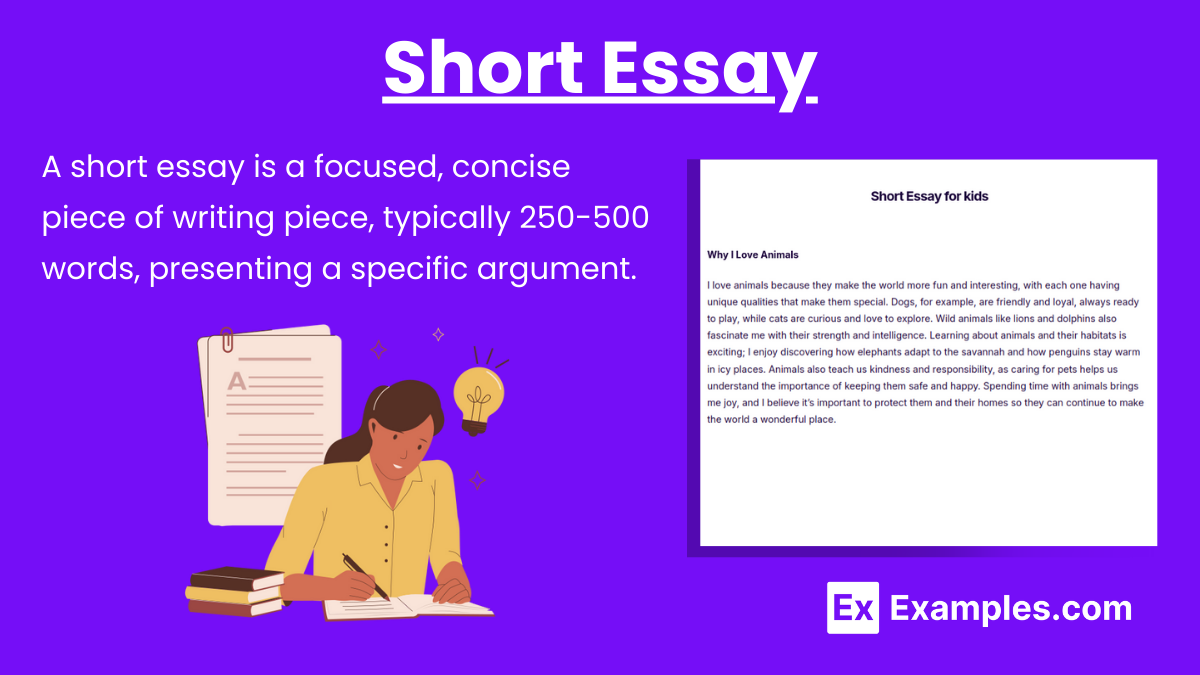
College Essay
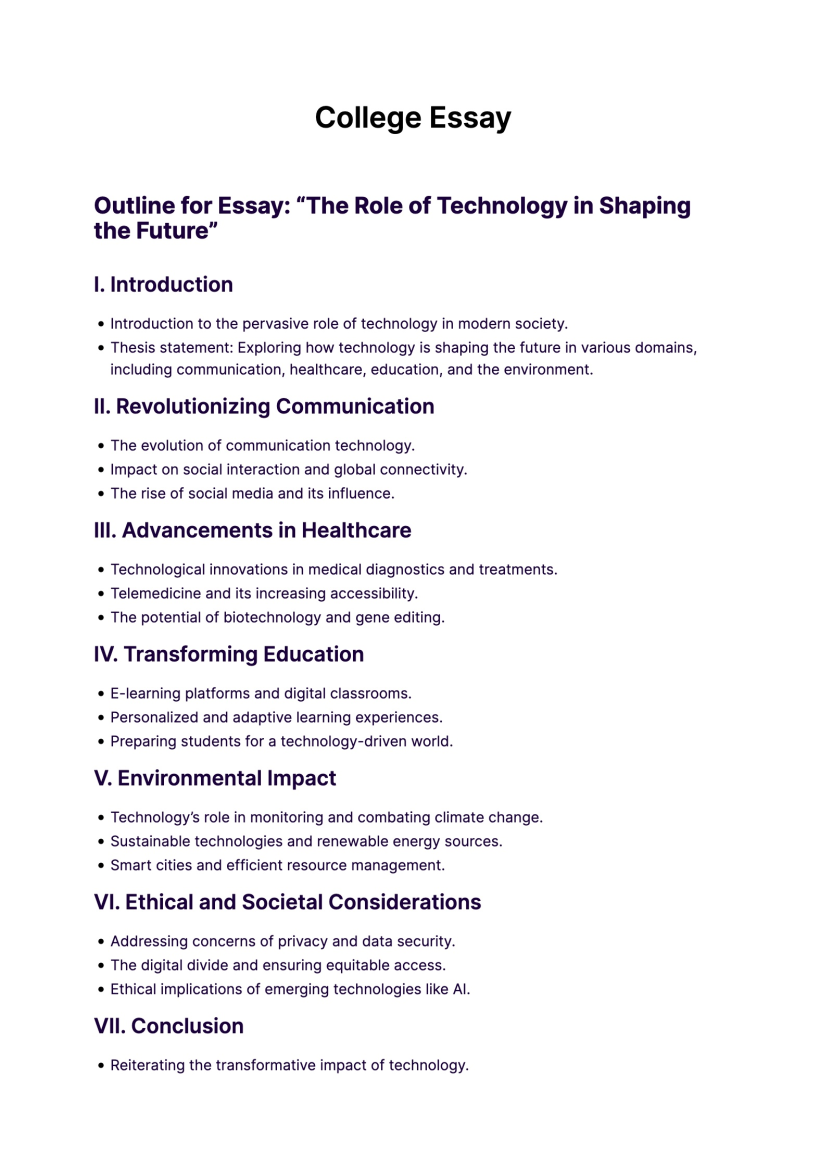
Free Download
Essay For Students
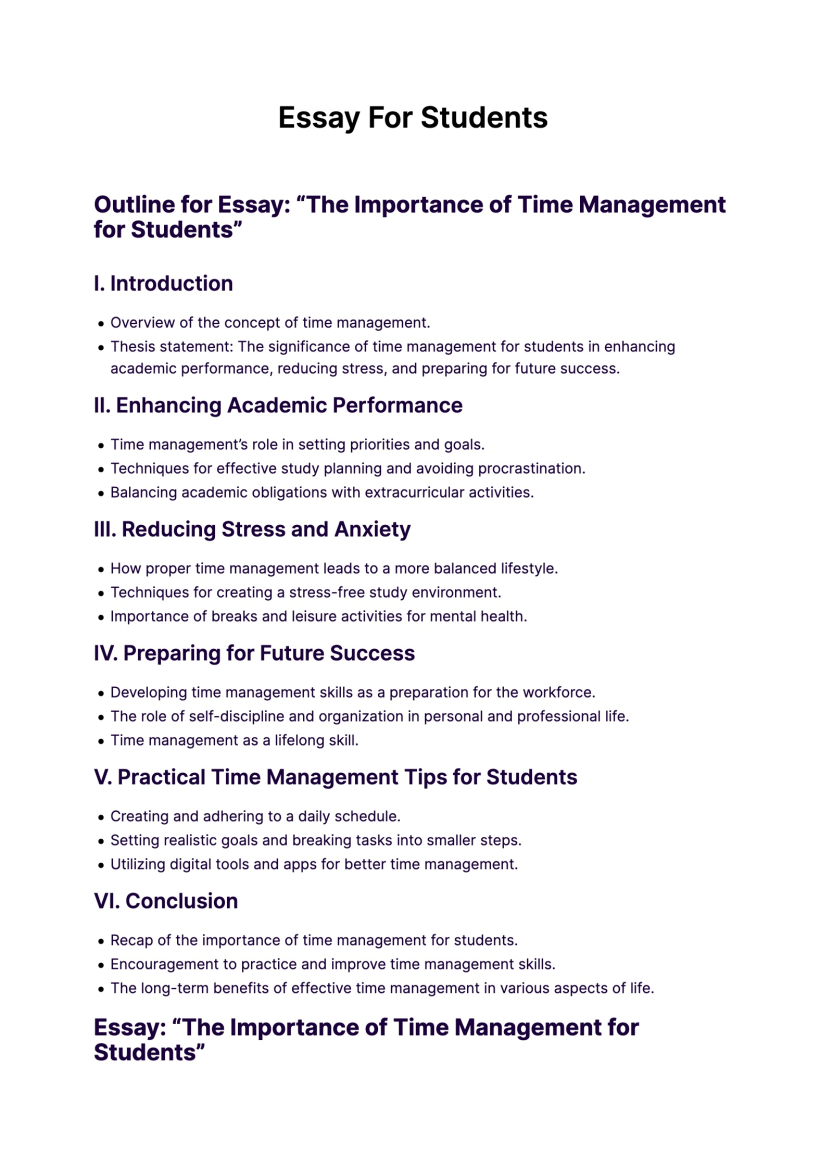
Sample Illustration
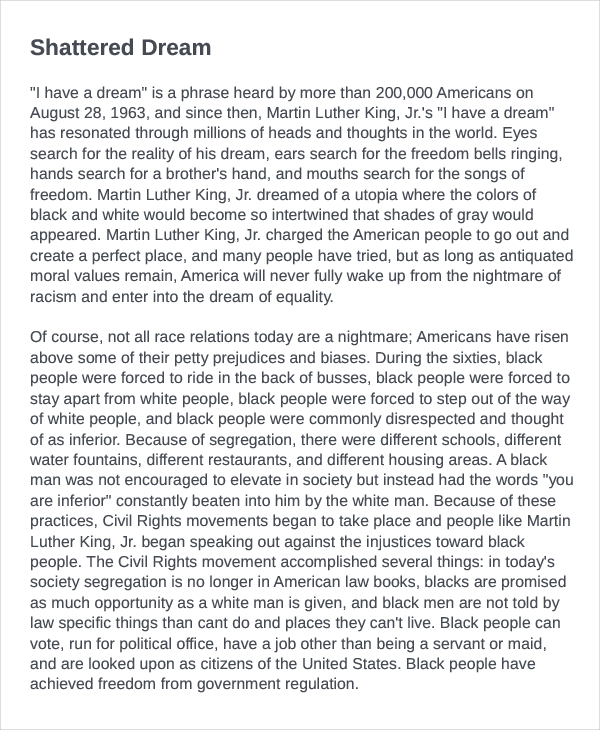
Reflective Essay
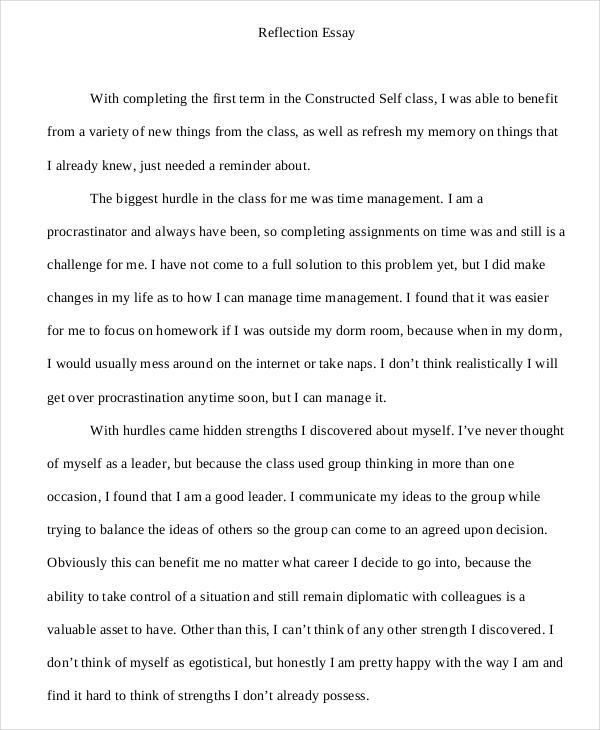
Autobiography Example
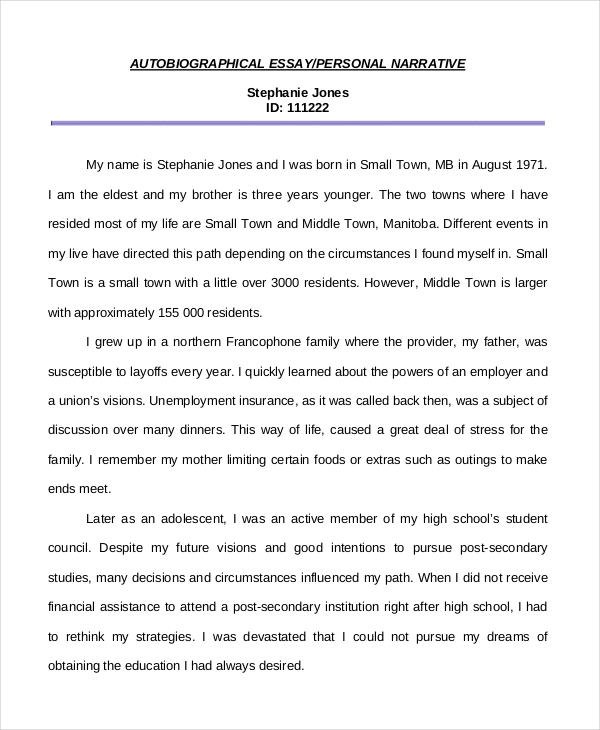
Sample Descriptive
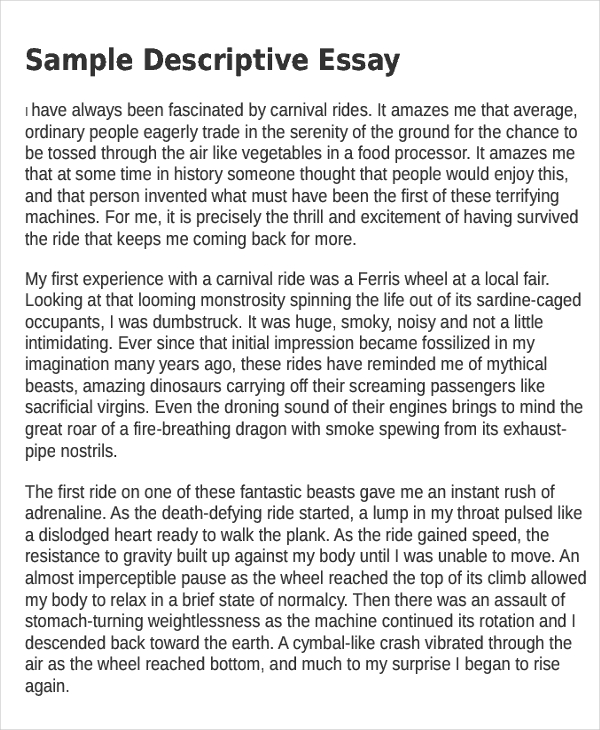
Free Argumentative
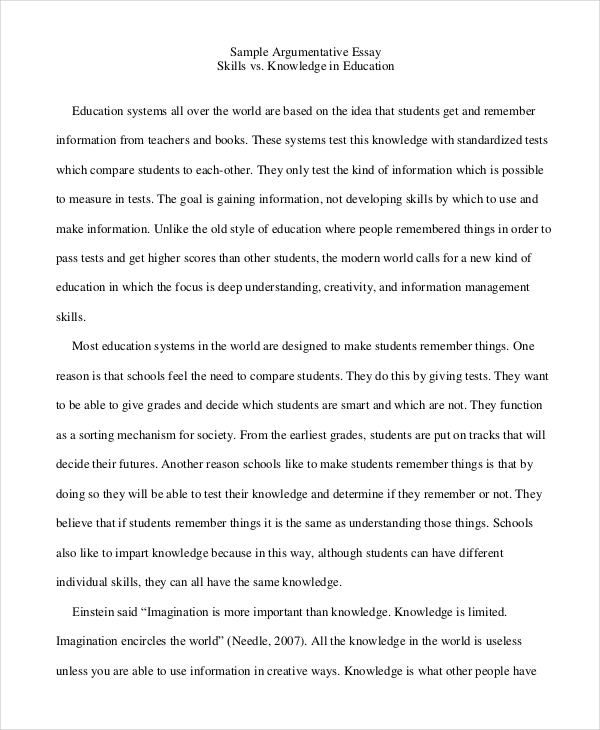
Observation Essay
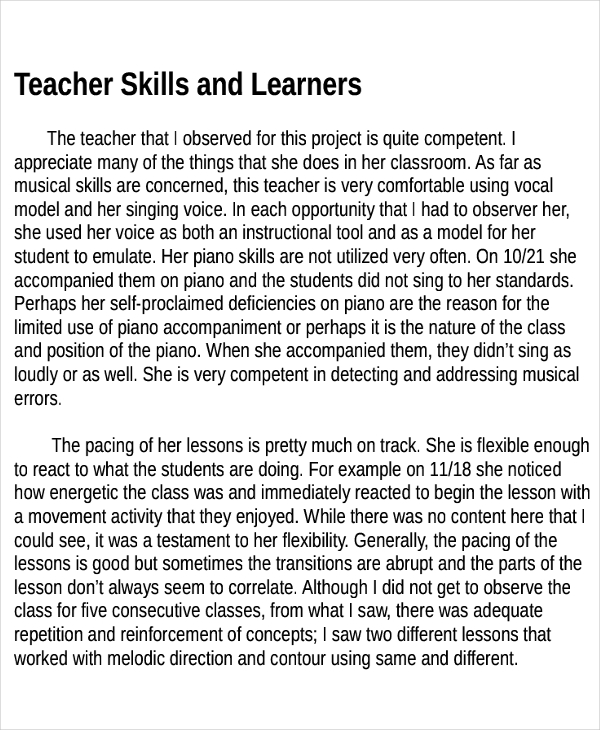
Free Response Sample
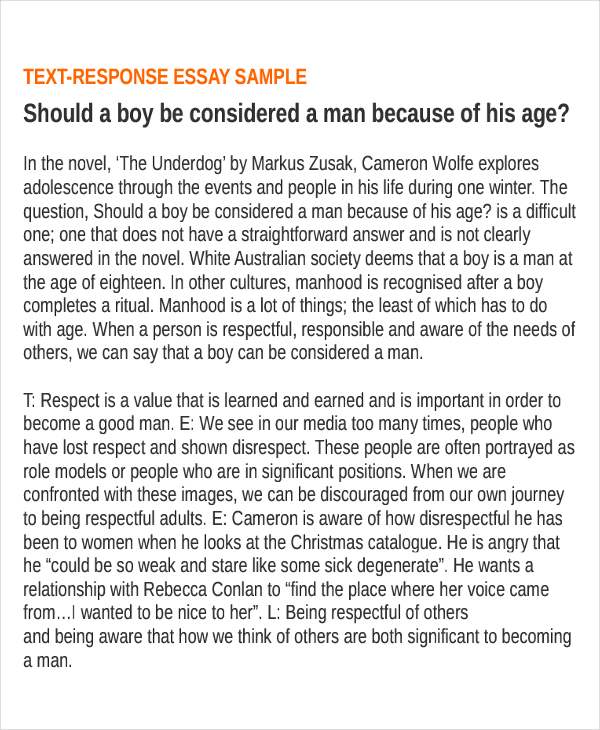
Narrative Essay
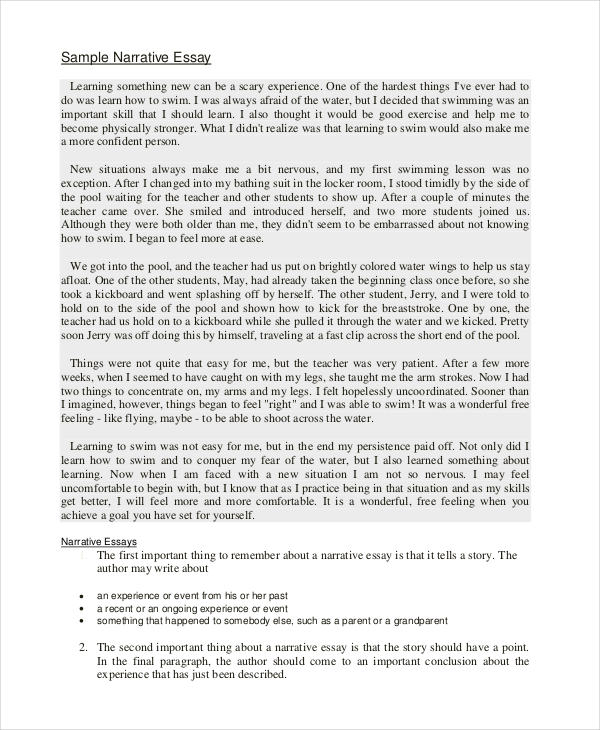
Free Service Example
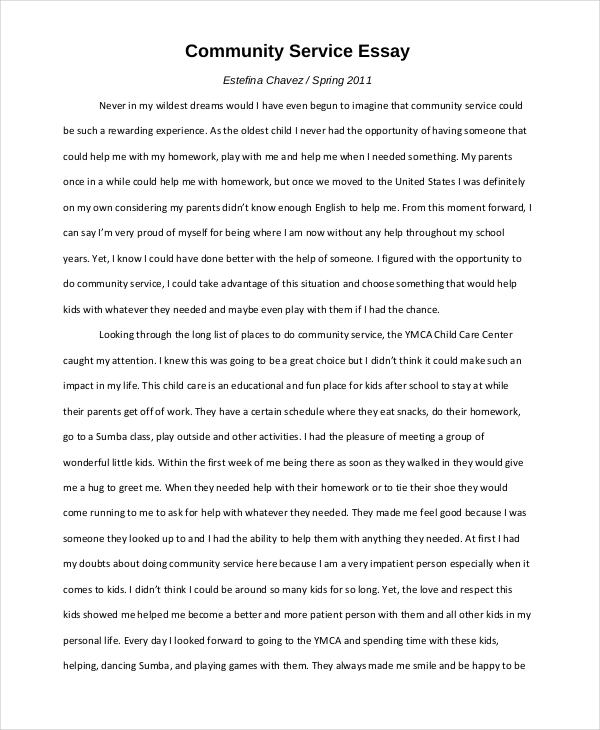
Free Personal
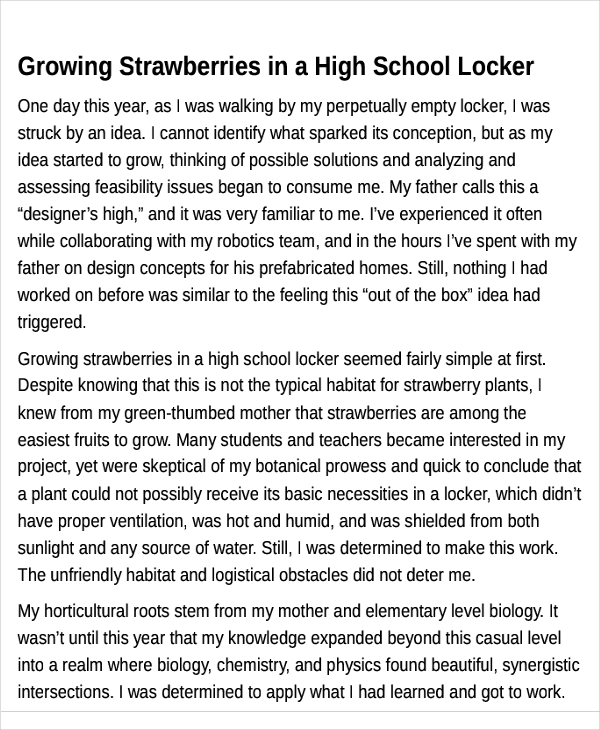
Analytical Essay
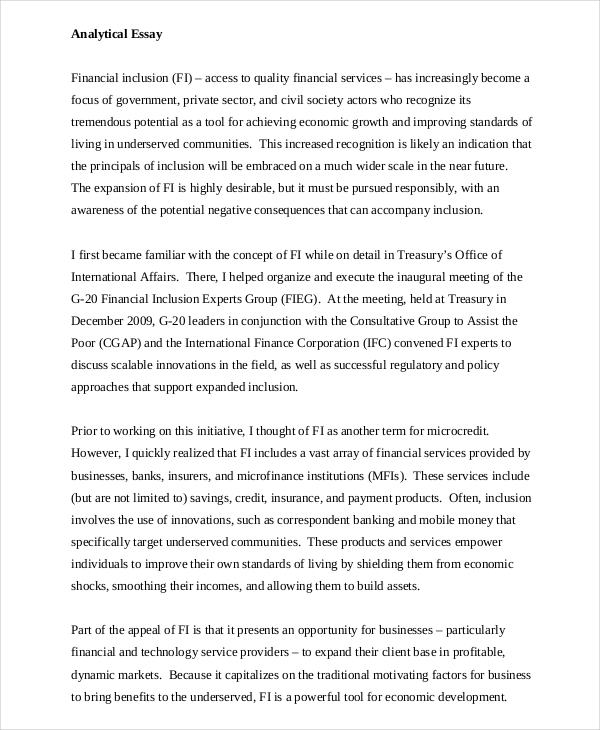
Free Comparative Example

Dialogue Essay
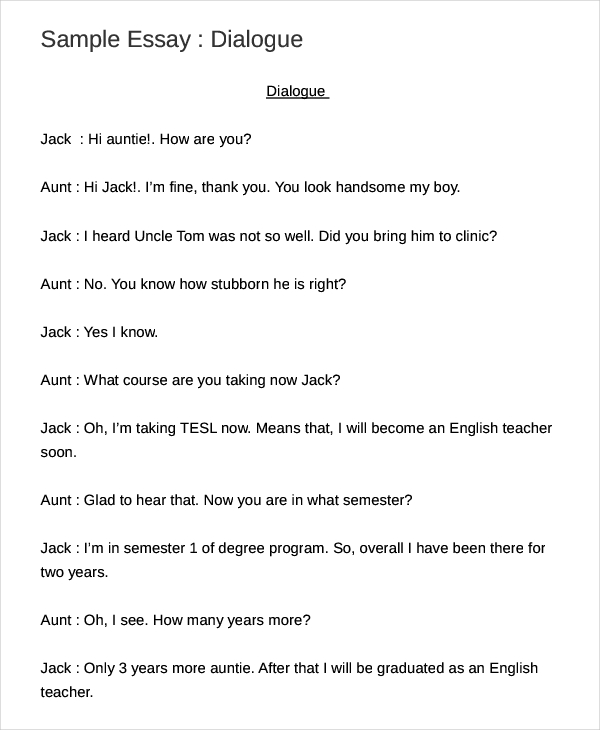
Free Economics Sample
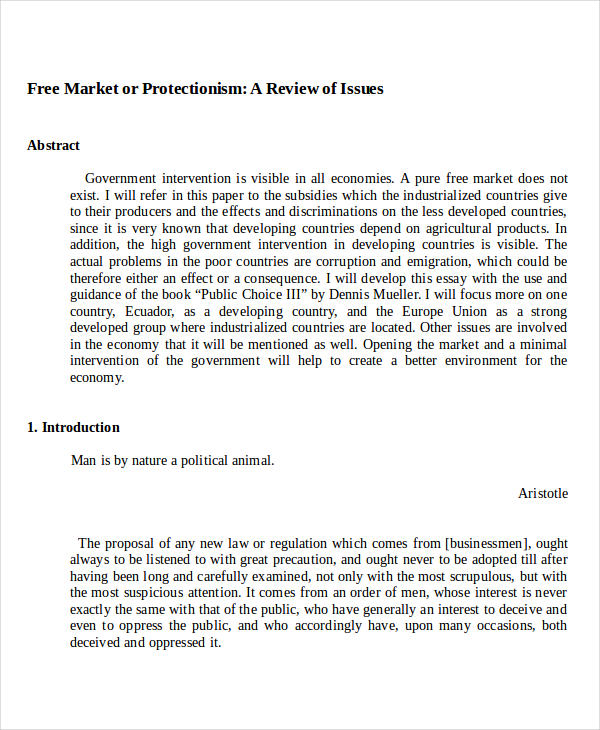
Free Expository
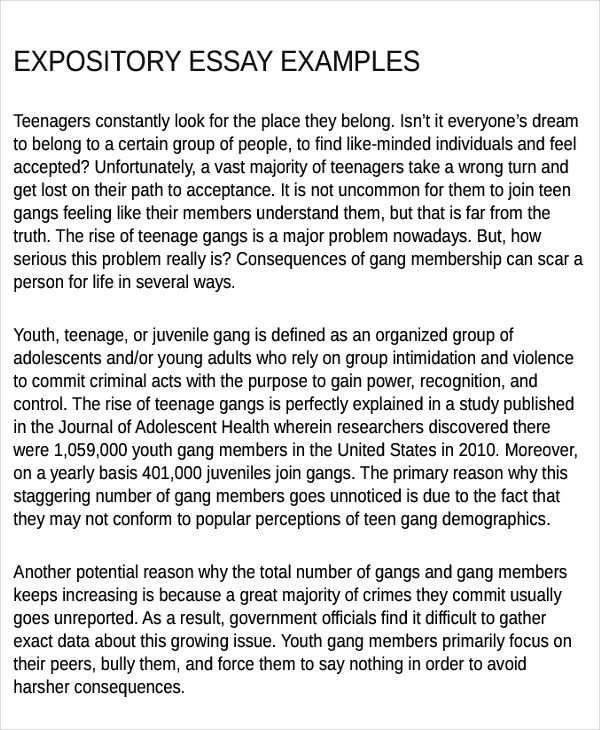
Exploratory Example
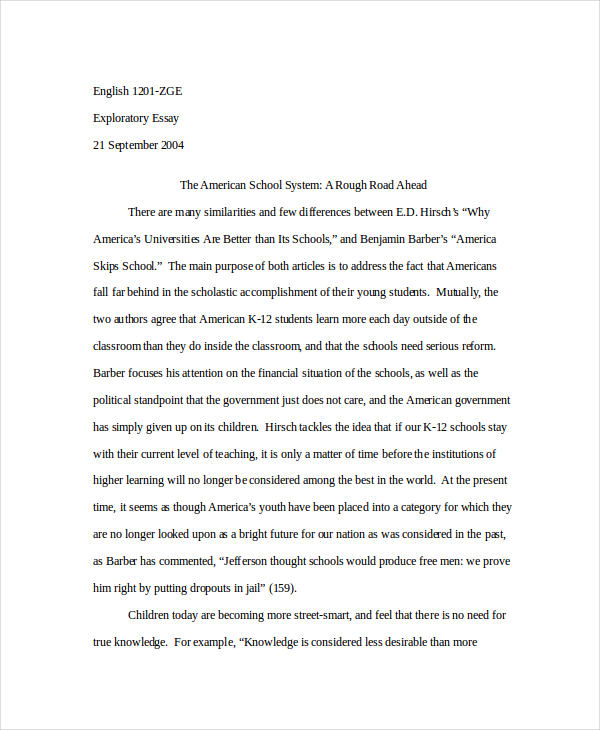
Informative Essay
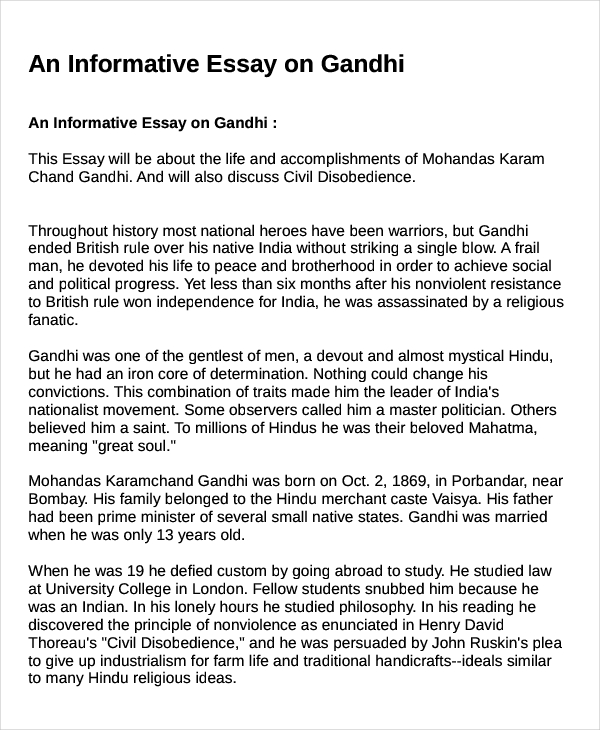
More Essay Templates in PDF, DOC
1. argumentative essay writing example.
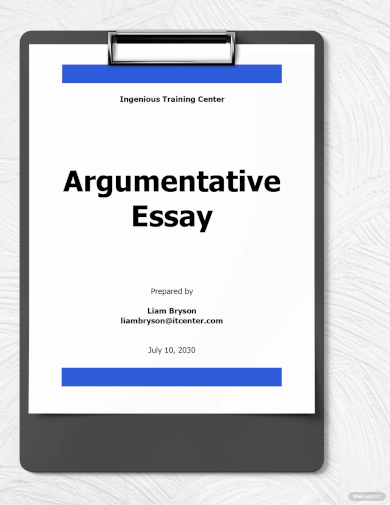
2. 5-Paragraph Essay Writing Example
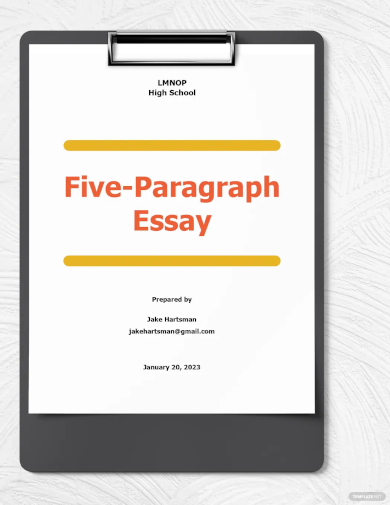
3. Character Analysis Writing Essay Outline
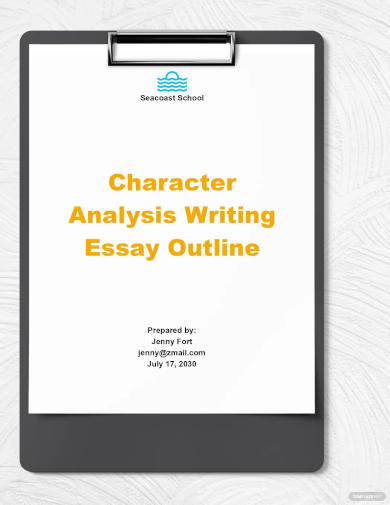
4. Free Essay Writing Plan Example
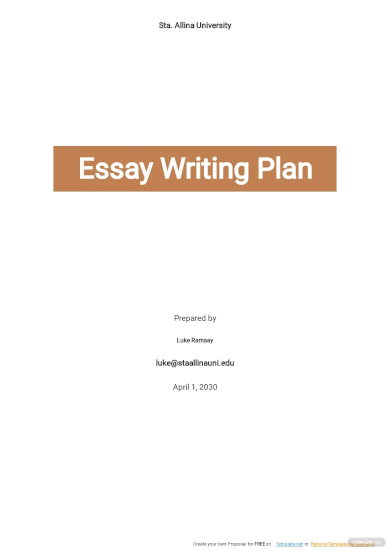

5. Argumentative Essay Writing Middle School
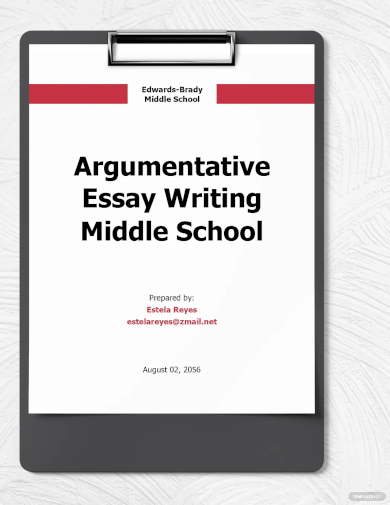
6. Example of Essay Writing Format
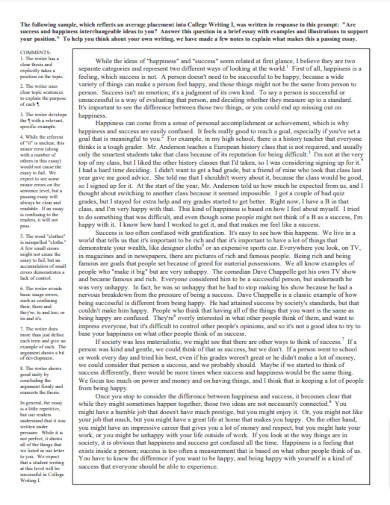
7. Composition Essay Writing Example
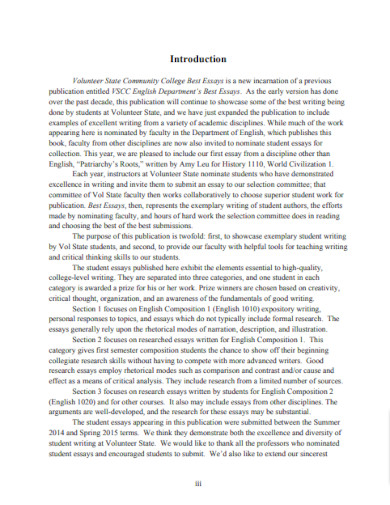
8. Photo Essay Writing Example
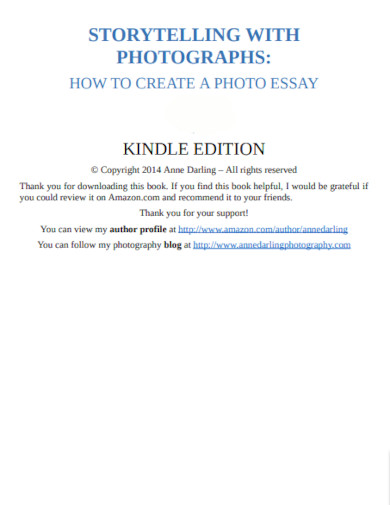
9. Essay Writing Example For Students
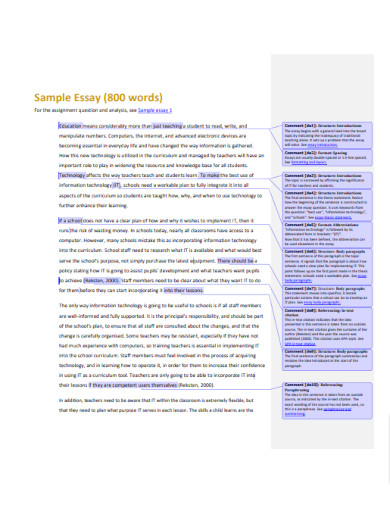
10. Argumentative Essay Writing Example
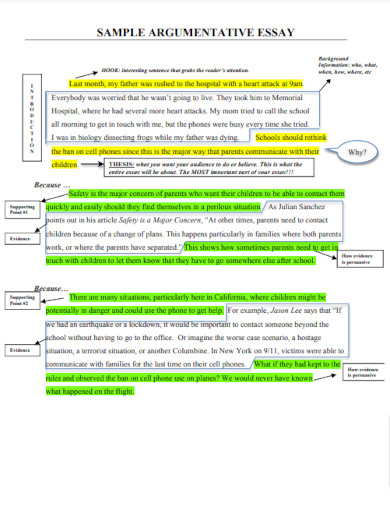
11. Academic Essay Writing Example
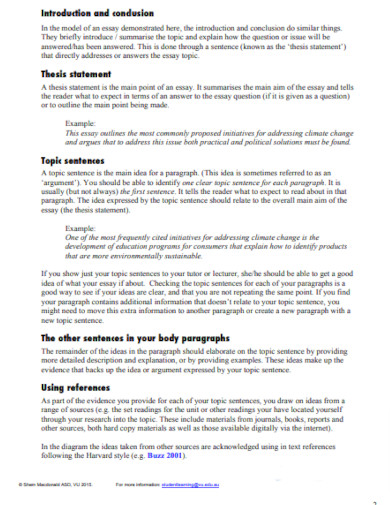
12. Advanced Essay Writing Example
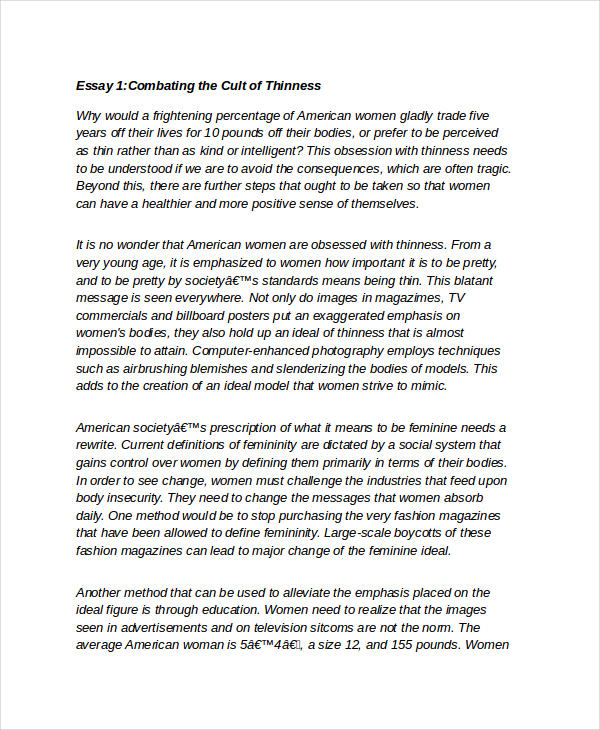
13. Critical Essay Writing Example
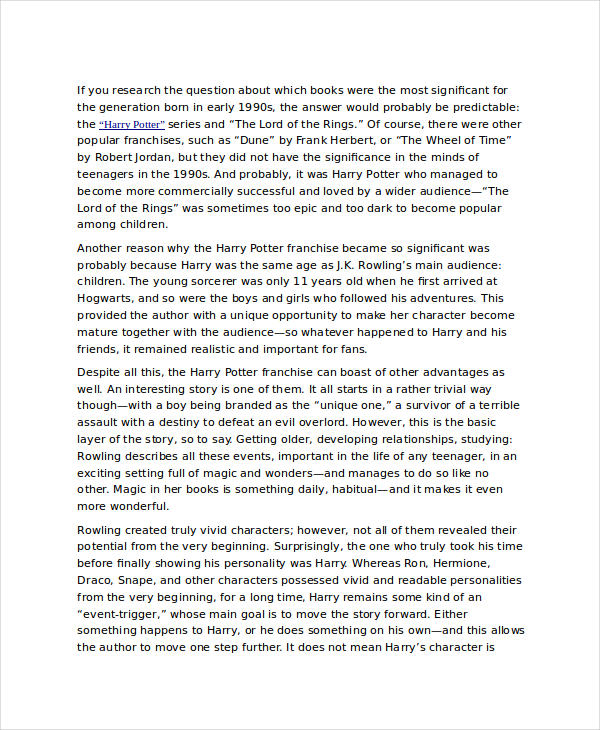
14. Descriptive Essay Sample Example
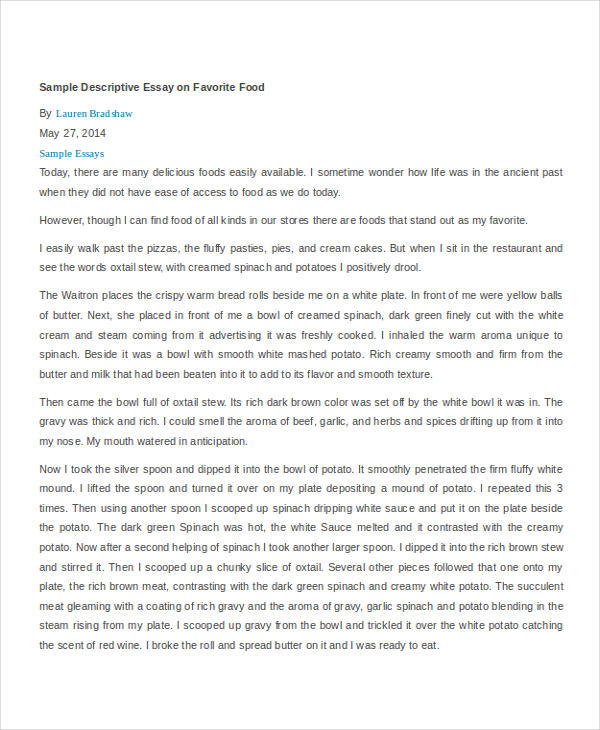
15. Education Essay Writing Example
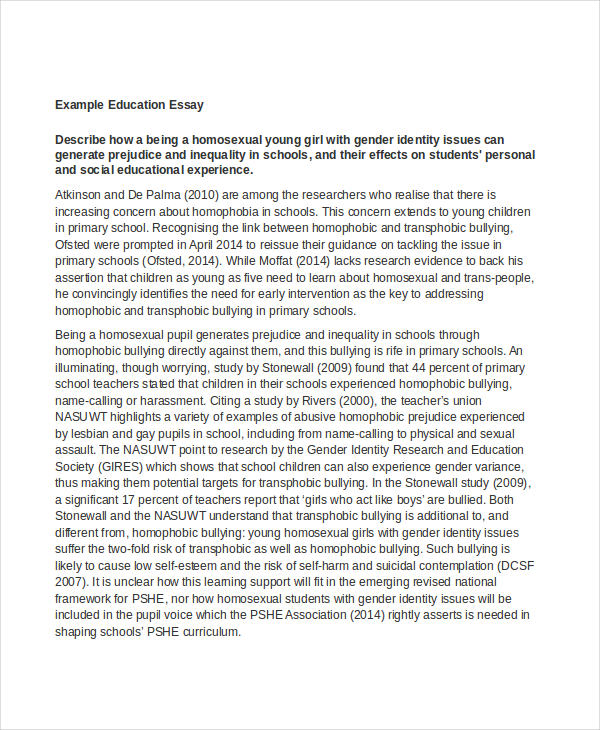
16. Self-Evaluation Essay Example
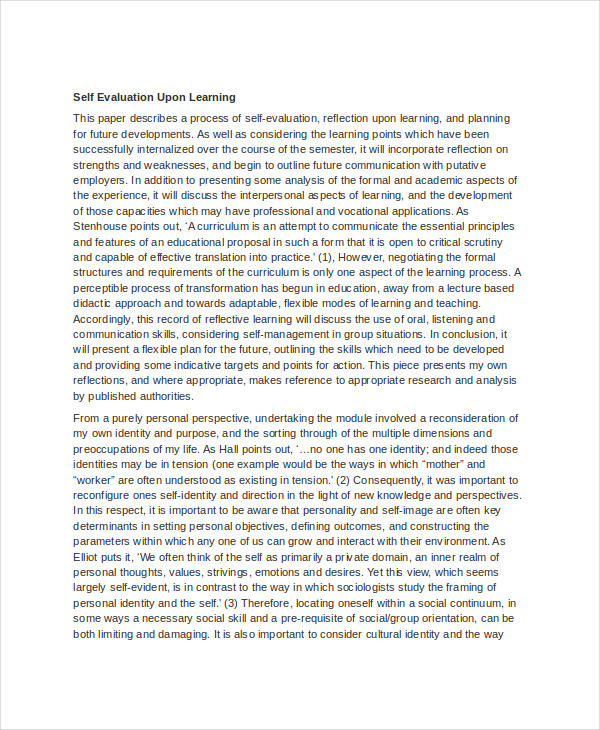
17. Leadership and Profile Essay Writing
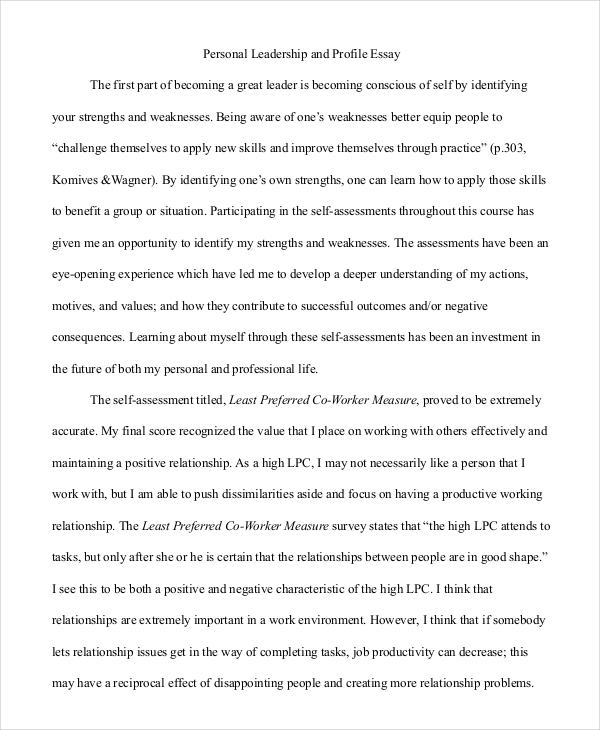
18. Histographic Narrative Essay Sample Example
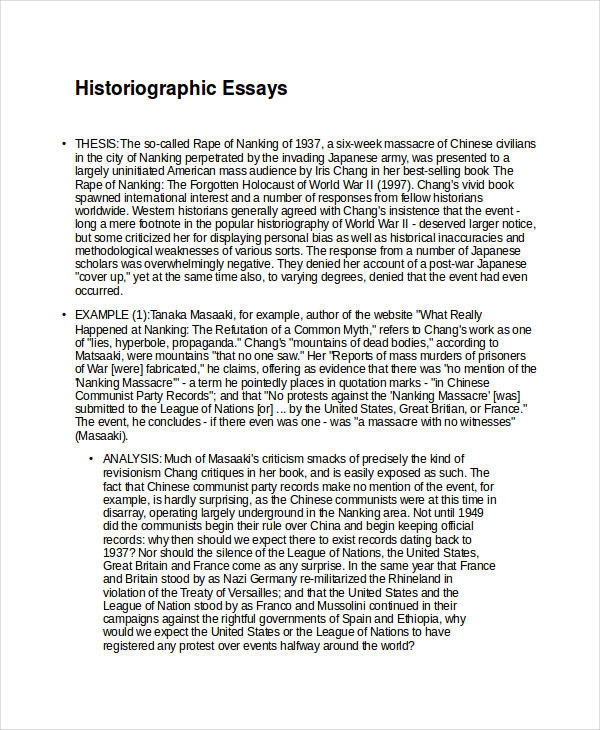
19. Nursing Essay Writing Example
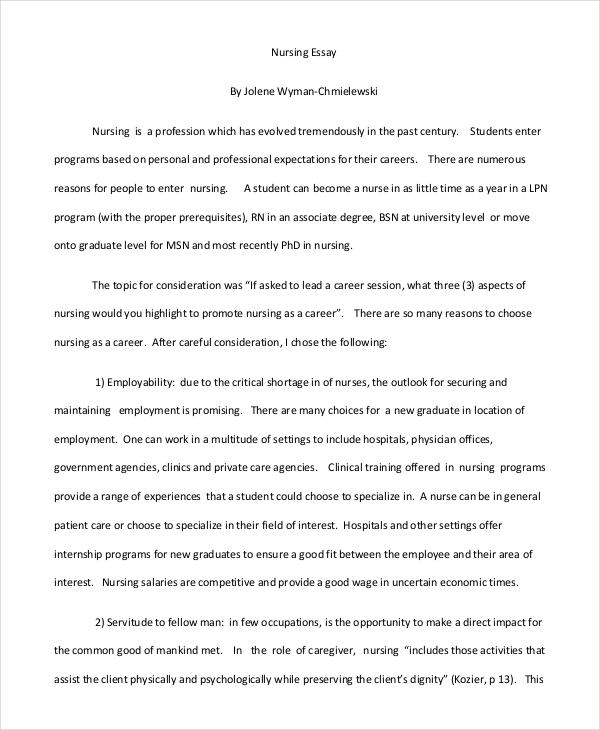
20. Persuasive Application Essay Example

21. Short Personal Writing Example
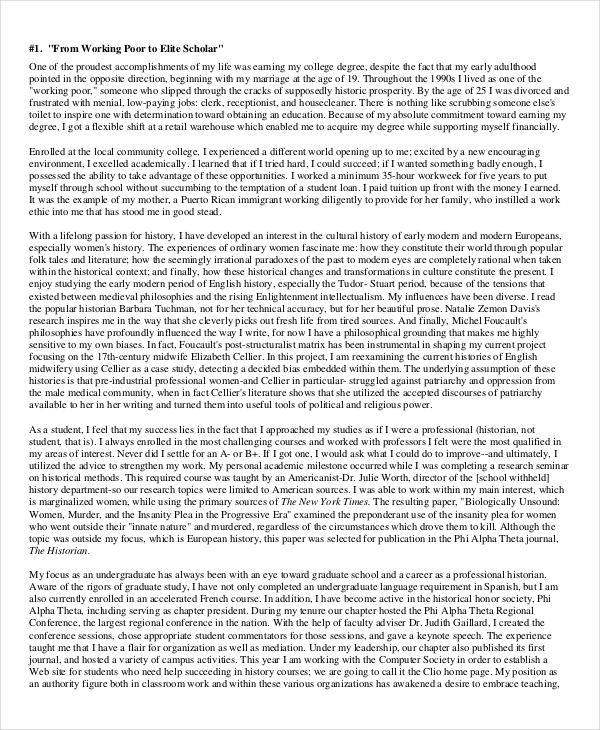
22. Sample Vacation Writing Example
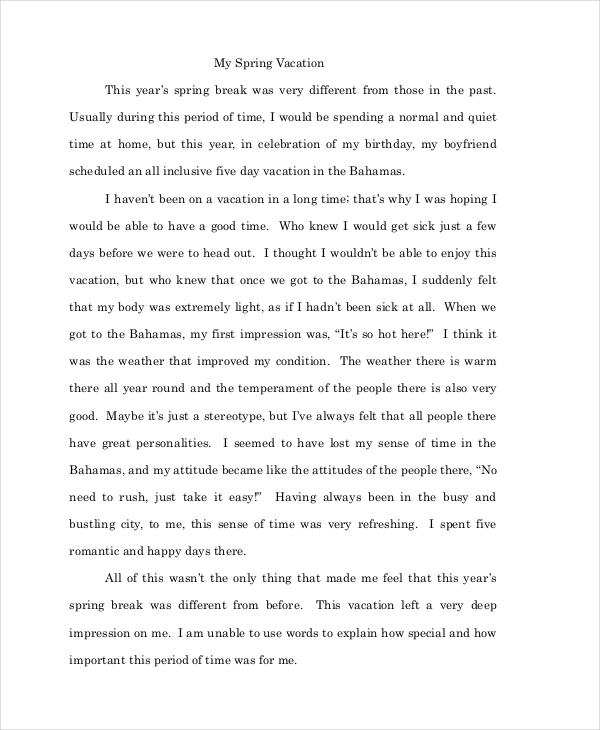
What Is an Essay Outline?
An essay outline is a collection of thoughts and ideas relevant to the subject matter. It serves as a guide for writers to properly organize their thoughts into paragraphs. Writing templates are quite useful for essays with topics that are unfamiliar to the writer. It also allows the writer to properly reorganize points and research further on unclear statements. This will make it easier for the writer to emphasize important points properly.
What to Include in a Creative Essay
Creative essay writing is simply freestyle writing. It’s about being open-minded and imaginative with your thoughts. There are no exact rules being set but instead, it takes on a more narrative writing approach to the standard essay writing. It is an informal type of essay writing as opposed to those of formal writing examples, such as in argumentative college application examples , in essay writing. Creative essays must have a topic. It may be about personal experiences or fictional beliefs. Make sure that the essay has a purpose, to either inform or entertain readers with interesting details. Although this isn’t the standard way of writing, it’s still important to emphasize the point of your essay.
Types of Essay Writing
- Narrative Essay : Tells a story, often personal, with a central theme or point.
- Descriptive Essay : Paints a picture using detailed observations and descriptions.
- Expository Essay : Provides factual information on a topic, explaining ideas without personal opinions.
- Persuasive Essay : Aims to convince the reader of a certain point of view or argument.
- Compare and Contrast Essay : Discusses similarities and differences between two subjects.
- Cause and Effect Essay : Explores the reasons (causes) for something and the results (effects) of those reasons.
- Problem-Solution Essay : Identifies a problem and proposes one or more solutions.
- Definition Essay : Explains the meaning of a term or a concept.
- Argumentative Essay : Presents a balanced view of a controversial issue, arguing for one side.
- Critical Essay : Analyzes the strengths, weaknesses, and methods of a certain subject, such as a piece of art or literature.
- Analytical Essay : Breaks down a concept or issue into its key components, examining them in detail.
- Process Essay : Gives step-by-step instructions on how to do something or how something is done.
- Reflective Essay : Shares the writer’s personal experiences or thoughts on a topic, reflecting on the deeper meaning.
How to Write an Essay? – Step by Step Guide
- Understand the Assignment: Carefully read the essay prompt or assignment instructions. Ensure you understand the topic, purpose, and any specific requirements, such as word count or formatting.
- Choose Your Topic : Sometimes you might have a topic assigned, or you may need to choose one. Pick a topic that interests you and can be explored in depth.
- Research Your Topic : Gather information from various sources like books, websites, or academic journals. Take notes to keep track of important points and references.
- Create a Thesis Statement : This is the main point of your essay. Your thesis statement should clearly state your position or the central argument of your essay.
- Outline Your Essay : Plan the structure of your essay. Typically, this includes an introduction, body paragraphs, and a conclusion.
- Write the Introduction : Start with a hook to grab the reader’s attention, followed by a few sentences leading to your thesis statement.
- Develop the Body Paragraphs : Each paragraph should focus on a single idea that supports your thesis. Start with a topic sentence, then add examples, evidence, and explanations.
- Write the Conclusion : Summarize your main points and restate your thesis in a new way. Provide a final thought or call to action to leave the reader with something to think about.
Do’s & Don’ts in a Essay Writing
Tips for writing an essay.
- Clear and Concise Topic : Choose a well-defined and concise topic for your essay. A focused topic makes it easier to convey your message effectively.
- Solid Thesis Statement : Craft a strong thesis statement that clearly states the main argument or purpose of your essay. This statement should be specific and debatable.
- Outline Your Essay : Before writing, create an outline with a clear structure, including an introduction, body paragraphs, and a conclusion. This will help you stay organized.
- Engaging Introduction : Start your essay with an engaging introduction that hooks the reader. You can use an anecdote, a surprising fact, or a relevant quote to grab attention.
- Well-Structured Body : Each body paragraph should have a clear topic sentence, supporting evidence, and a transition to the next point. Make sure your arguments flow logically.
- Use Strong Evidence : Back up your claims with strong evidence, examples, and relevant data. Quality evidence enhances the credibility of your essay.
- Effective Transitions : Use transitional words and phrases to connect ideas and paragraphs smoothly. This ensures that your essay flows coherently.
Guidelines for Essay Writing
Although we have to admit that writing an essay is not an easy task, being able to finish one is such a rewarding experience especially if it is an assignment you have to pass the next day. There is no perfect solution on how to write an effective essay.
However, there are certain guideline which you can use in order for you to make that outstanding essay.
- Choose your topic. Deciding what essay to write starts with choosing the right topic. Don’t just write something that everybody is interested to write about. Rather, pick a topic that you are most excited to write about so it would be easier for you to express your thoughts.
- Create a mind map . A mind map is a sketch of form or an essay outline used to organize information. This is best in order for you to logically express your thoughts and to present it in a coherent manner. Write your ideas in a draft paper and choose which ones to come first and which ones to use as your supporting arguments.
- Compose yourself. Having the right disposition is important in writing an essay. You need to have focus so that while you are writing, you are not distracted by outside thoughts which could ruin your momentum.
Why Is Essay Writing Important?
Essay writing skills is a difficult and time-consuming task. There’s more to it than mere writing, it involves researching and assembling of ideas. One may see it as a burden given by school teachers or college professors for extra credit, but we often fail to recognize how essay writing actually helps develop our logical thinking. Essay writing allows individuals to think critically and logically. Not only do you gain knowledge on a particular subject matter but you also learn how to express your thoughts through reasoning. The skills you’ll develop may even be useful in business writing. Some business writing examples include formal documents for reports and memos.
How do I start writing an essay?
To start writing an essay, first understand the assignment, choose a topic, create an outline, and craft a compelling introduction with a clear thesis statement.
What is a good sentence to start an essay?
A strong start to an essay could be: “In an age of rapid technological advancements, the impact of digitalization on society is undeniable, reshaping our lives in profound ways.”
What should an essay look like?
An essay typically comprises an introduction with a thesis statement, several body paragraphs presenting arguments with supporting evidence, and a conclusion summarizing key points and restating the thesis.
How do you start an introduction for an essay example?
Begin an essay introduction by grabbing the reader’s attention with a hook, offering background information on the topic, and concluding with a clear thesis statement that outlines your main argument.
What is a thesis statement?
A thesis statement is a concise summary of the main point or claim of an essay, guiding the direction and focus of the writing.
How do you structure an essay?
An essay typically follows a structure of introduction, body paragraphs, and conclusion, ensuring a logical flow of ideas and arguments.
What is the importance of an essay outline?
An essay outline helps organize thoughts, ensures a coherent structure, and makes the writing process more efficient and focused.
How do you write a strong conclusion?
A strong conclusion summarizes key points, reinforces the thesis, and leaves a lasting impression or call to action for the reader.
What are some tips for writing a persuasive essay?
To write a persuasive essay, use logical arguments, credible evidence, and emotional appeals, while addressing counterarguments effectively.
How do you improve essay coherence?
Improve essay coherence by using clear transitions, maintaining a logical flow of ideas, and ensuring each paragraph supports the thesis statement.
Text prompt
- Instructive
- Professional
Write an Essay on the role of community service in personal development.
Create an Essay about the impact of digital literacy on modern education.
What are your chances of acceptance?
Calculate for all schools, your chance of acceptance.
Your chancing factors
Extracurriculars.
16 Strong College Essay Examples from Top Schools

What’s Covered:
- Common App Essays
- Why This College Essays
- Why This Major Essays
- Extracurricular Essays
- Overcoming Challenges Essays
- Community Service Essays
- Diversity Essays
- Political/Global Issues Essays
- Where to Get Feedback on Your Essays
Most high school students don’t get a lot of experience with creative writing, so the college essay can be especially daunting. Reading examples of successful essays, however, can help you understand what admissions officers are looking for.
In this post, we’ll share 16 college essay examples of many different topics. Most of the essay prompts fall into 8 different archetypes, and you can approach each prompt under that archetype in a similar way. We’ve grouped these examples by archetype so you can better structure your approach to college essays.
If you’re looking for school-specific guides, check out our 2022-2023 essay breakdowns .
Looking at examples of real essays students have submitted to colleges can be very beneficial to get inspiration for your essays. You should never copy or plagiarize from these examples when writing your own essays. Colleges can tell when an essay isn’t genuine and will not view students favorably if they plagiarized.
Note: the essays are titled in this post for navigation purposes, but they were not originally titled. We also include the original prompt where possible.
The Common App essay goes to all of the schools on your list, unless those schools use a separate application platform. Because of this, it’s the most important essay in your portfolio, and likely the longest essay you’ll need to write (you get up to 650 words).
The goal of this essay is to share a glimpse into who you are, what matters to you, and what you hope to achieve. It’s a chance to share your story.
Learn more about how to write the Common App essay in our complete guide.
The Multiple Meanings of Point
Prompt: Some students have a background, identity, interest, or talent that is so meaningful they believe their application would be incomplete without it. If this sounds like you, then please share your story. (250-650 words)
Night had robbed the academy of its daytime colors, yet there was comfort in the dim lights that cast shadows of our advances against the bare studio walls. Silhouettes of roundhouse kicks, spin crescent kicks, uppercuts and the occasional butterfly kick danced while we sparred. She approached me, eyes narrowed with the trace of a smirk challenging me. “Ready spar!” Her arm began an upward trajectory targeting my shoulder, a common first move. I sidestepped — only to almost collide with another flying fist. Pivoting my right foot, I snapped my left leg, aiming my heel at her midsection. The center judge raised one finger.
There was no time to celebrate, not in the traditional sense at least. Master Pollard gave a brief command greeted with a unanimous “Yes, sir” and the thud of 20 hands dropping-down-and-giving-him-30, while the “winners” celebrated their victory with laps as usual.
Three years ago, seven-thirty in the evening meant I was a warrior. It meant standing up straighter, pushing a little harder, “Yes, sir” and “Yes, ma’am”, celebrating birthdays by breaking boards, never pointing your toes, and familiarity. Three years later, seven-thirty in the morning meant I was nervous.
The room is uncomfortably large. The sprung floor soaks up the checkerboard of sunlight piercing through the colonial windows. The mirrored walls further illuminate the studio and I feel the light scrutinizing my sorry attempts at a pas de bourrée, while capturing the organic fluidity of the dancers around me. “Chassé en croix, grand battement, pique, pirouette.” I follow the graceful limbs of the woman in front of me, her legs floating ribbons, as she executes what seems to be a perfect ronds de jambes. Each movement remains a negotiation. With admirable patience, Ms. Tan casts me a sympathetic glance.
There is no time to wallow in the misery that is my right foot. Taekwondo calls for dorsiflexion; pointed toes are synonymous with broken toes. My thoughts drag me into a flashback of the usual response to this painful mistake: “You might as well grab a tutu and head to the ballet studio next door.” Well, here I am Master Pollard, unfortunately still following your orders to never point my toes, but no longer feeling the satisfaction that comes with being a third degree black belt with 5 years of experience quite literally under her belt. It’s like being a white belt again — just in a leotard and ballet slippers.
But the appetite for new beginnings that brought me here doesn’t falter. It is only reinforced by the classical rendition of “Dancing Queen” that floods the room and the ghost of familiarity that reassures me that this new beginning does not and will not erase the past. After years spent at the top, it’s hard to start over. But surrendering what you are only leads you to what you may become. In Taekwondo, we started each class reciting the tenets: honor, courtesy, integrity, perseverance, self-control, courage, humility, and knowledge, and I have never felt that I embodied those traits more so than when I started ballet.
The thing about change is that it eventually stops making things so different. After nine different schools, four different countries, three different continents, fluency in Tamil, Norwegian, and English, there are more blurred lines than there are clear fragments. My life has not been a tactfully executed, gold medal-worthy Taekwondo form with each movement defined, nor has it been a series of frappés performed by a prima ballerina with each extension identical and precise, but thankfully it has been like the dynamics of a spinning back kick, fluid, and like my chances of landing a pirouette, unpredictable.
The first obvious strength of this essay is the introduction—it is interesting and snappy and uses enough technical language that we want to figure out what the student is discussing. When writing introductions, students tend to walk the line between intriguing and confusing. It is important that your essay ends up on the intentionally intriguing side of that line—like this student does! We are a little confused at first, but by then introducing the idea of “sparring,” the student grounds their essay.
People often advise young writers to “show, not tell.” This student takes that advice a step further and makes the reader do a bit of work to figure out what they are telling us. Nowhere in this essay does it say “After years of Taekwondo, I made the difficult decision to switch over to ballet.” Rather, the student says “It’s like being a white belt again — just in a leotard and ballet slippers.” How powerful!
After a lot of emotional language and imagery, this student finishes off their essay with very valuable (and necessary!) reflection. They show admissions officers that they are more than just a good writer—they are a mature and self-aware individual who would be beneficial to a college campus. Self-awareness comes through with statements like “surrendering what you are only leads you to what you may become” and maturity can be seen through the student’s discussion of values: “honor, courtesy, integrity, perseverance, self-control, courage, humility, and knowledge, and I have never felt that I embodied those traits more so than when I started ballet.”
Sparking Self-Awareness
Prompt: The lessons we take from obstacles we encounter can be fundamental to later success. Recount a time when you faced a challenge, setback, or failure. How did it affect you, and what did you learn from the experience? (250-650 words)
Was I no longer the beloved daughter of nature, whisperer of trees? Knee-high rubber boots, camouflage, bug spray—I wore the garb and perfume of a proud wild woman, yet there I was, hunched over the pathetic pile of stubborn sticks, utterly stumped, on the verge of tears. As a child, I had considered myself a kind of rustic princess, a cradler of spiders and centipedes, who was serenaded by mourning doves and chickadees, who could glide through tick-infested meadows and emerge Lyme-free. I knew the cracks of the earth like the scars on my own rough palms. Yet here I was, ten years later, incapable of performing the most fundamental outdoor task: I could not, for the life of me, start a fire.
Furiously I rubbed the twigs together—rubbed and rubbed until shreds of skin flaked from my fingers. No smoke. The twigs were too young, too sticky-green; I tossed them away with a shower of curses, and began tearing through the underbrush in search of a more flammable collection. My efforts were fruitless. Livid, I bit a rejected twig, determined to prove that the forest had spurned me, offering only young, wet bones that would never burn. But the wood cracked like carrots between my teeth—old, brittle, and bitter. Roaring and nursing my aching palms, I retreated to the tent, where I sulked and awaited the jeers of my family.
Rattling their empty worm cans and reeking of fat fish, my brother and cousins swaggered into the campsite. Immediately, they noticed the minor stick massacre by the fire pit and called to me, their deep voices already sharp with contempt.
“Where’s the fire, Princess Clara?” they taunted. “Having some trouble?” They prodded me with the ends of the chewed branches and, with a few effortless scrapes of wood on rock, sparked a red and roaring flame. My face burned long after I left the fire pit. The camp stank of salmon and shame.
In the tent, I pondered my failure. Was I so dainty? Was I that incapable? I thought of my hands, how calloused and capable they had been, how tender and smooth they had become. It had been years since I’d kneaded mud between my fingers; instead of scaling a white pine, I’d practiced scales on my piano, my hands softening into those of a musician—fleshy and sensitive. And I’d gotten glasses, having grown horrifically nearsighted; long nights of dim lighting and thick books had done this. I couldn’t remember the last time I had lain down on a hill, barefaced, and seen the stars without having to squint. Crawling along the edge of the tent, a spider confirmed my transformation—he disgusted me, and I felt an overwhelming urge to squash him.
Yet, I realized I hadn’t really changed—I had only shifted perspective. I still eagerly explored new worlds, but through poems and prose rather than pastures and puddles. I’d grown to prefer the boom of a bass over that of a bullfrog, learned to coax a different kind of fire from wood, having developed a burn for writing rhymes and scrawling hypotheses.
That night, I stayed up late with my journal and wrote about the spider I had decided not to kill. I had tolerated him just barely, only shrieking when he jumped—it helped to watch him decorate the corners of the tent with his delicate webs, knowing that he couldn’t start fires, either. When the night grew cold and the embers died, my words still smoked—my hands burned from all that scrawling—and even when I fell asleep, the ideas kept sparking—I was on fire, always on fire.
First things first, this Common App essay is well-written. This student is definitely showing the admissions officers her ability to articulate her points beautifully and creatively. It starts with vivid images like that of the “rustic princess, a cradler of spiders and centipedes, who was serenaded by mourning doves and chickadees, who could glide through tick-infested meadows and emerge Lyme-free.” And because the prose is flowery (and beautiful!), the writer can get away with metaphors like “I knew the cracks of the earth like the scars on my own rough palms” that might sound cheesy without the clear command of the English language that the writer quickly establishes.
In addition to being well-written, this essay is thematically cohesive. It begins with the simple introduction “Fire!” and ends with the following image: “When the night grew cold and the embers died, my words still smoked—my hands burned from all that scrawling—and even when I fell asleep, the ideas kept sparking—I was on fire, always on fire.” This full-circle approach leaves readers satisfied and impressed.
While dialogue often comes off as cliche or trite, this student effectively incorporates her family members saying “Where’s the fire, Princess Clara?” This is achieved through the apt use of the verb “taunted” to characterize the questioning and through the question’s thematic connection to the earlier image of the student as a rustic princess. Similarly, rhetorical questions can feel randomly placed in essays, but this student’s inclusion of the questions “Was I so dainty?” and “Was I that incapable?” feel perfectly justified after she establishes that she was pondering her failure.
Quite simply, this essay shows how quality writing can make a simple story outstandingly compelling.
Why This College?
“Why This College?” is one of the most common essay prompts, likely because schools want to understand whether you’d be a good fit and how you’d use their resources.
This essay is one of the more straightforward ones you’ll write for college applications, but you still can and should allow your voice to shine through.
Learn more about how to write the “Why This College?” essay in our guide.
Prompt: How will you explore your intellectual and academic interests at the University of Pennsylvania? Please answer this question given the specific undergraduate school to which you are applying (650 words).
Sister Simone Roach, a theorist of nursing ethics, said, “caring is the human mode of being.” I have long been inspired by Sister Roach’s Five C’s of Caring: commitment, conscience, competence, compassion, and confidence. Penn both embraces and fosters these values through a rigorous, interdisciplinary curriculum and unmatched access to service and volunteer opportunities.
COMMITMENT. Reading through the activities that Penn Quakers devote their time to (in addition to academics!) felt like drinking from a firehose in the best possible way. As a prospective nursing student with interests outside of my major, I value this level of flexibility. I plan to leverage Penn’s liberal arts curriculum to gain an in-depth understanding of the challenges LGBT people face, especially regarding healthcare access. Through courses like “Interactional Processes with LGBT Individuals” and volunteering at the Mazzoni Center for outreach, I hope to learn how to better support the Penn LGBT community as well as my family and friends, including my cousin, who came out as trans last year.
CONSCIENCE. As one of the first people in my family to attend a four-year university, I wanted a school that promoted a sense of moral responsibility among its students. At Penn, professors challenge their students to question and recreate their own set of morals by sparking thought- provoking, open-minded discussions. I can imagine myself advocating for universal healthcare in courses such as “Health Care Reform & Future of American Health System” and debating its merits with my peers. Studying in an environment where students confidently voice their opinions – conservative or liberal – will push me to question and strengthen my value system.
COMPETENCE. Two aspects that drew my attention to Penn’s BSN program were its high-quality research opportunities and hands-on nursing projects. Through its Office of Nursing Research, Penn connects students to faculty members who share similar research interests. As I volunteered at a nursing home in high school, I hope to work with Dr. Carthon to improve the quality of care for senior citizens. Seniors, especially minorities, face serious barriers to healthcare that I want to resolve. Additionally, Penn’s unique use of simulations to bridge the gap between classroom learning and real-world application impressed me. Using computerized manikins that mimic human responses, classes in Penn’s nursing program allow students to apply their emergency medical skills in a mass casualty simulation and monitor their actions afterward through a video system. Participating in this activity will help me identify my strengths and areas for improvement regarding crisis management and medical care in a controlled yet realistic setting. Research opportunities and simulations will develop my skills even before I interact with patients.
COMPASSION. I value giving back through community service, and I have a particular interest in Penn’s Community Champions and Nursing Students For Sexual & Reproductive Health (NSRH). As a four-year volunteer health educator, I hope to continue this work as a Community Champions member. I am excited to collaborate with medical students to teach fourth and fifth graders in the city about cardiology or lead a chair dance class for the elders at the LIFE Center. Furthermore, as a feminist who firmly believes in women’s abortion rights, I’d like to join NSRH in order to advocate for women’s health on campus. At Penn, I can work with like-minded people to make a meaningful difference.
CONFIDENCE. All of the Quakers that I have met possess one defining trait: confidence. Each student summarized their experiences at Penn as challenging but fulfilling. Although I expect my coursework to push me, from my conversations with current Quakers I know it will help me to be far more effective in my career.
The Five C’s of Caring are important heuristics for nursing, but they also provide insight into how I want to approach my time in college. I am eager to engage with these principles both as a nurse and as a Penn Quaker, and I can’t wait to start.
This prompt from Penn asks students to tailor their answer to their specific field of study. One great thing that this student does is identify their undergraduate school early, by mentioning “Sister Simone Roach, a theorist of nursing ethics.” You don’t want readers confused or searching through other parts of your application to figure out your major.
With a longer essay like this, it is important to establish structure. Some students organize their essay in a narrative form, using an anecdote from their past or predicting their future at a school. This student uses Roach’s 5 C’s of Caring as a framing device that organizes their essay around values. This works well!
While this essay occasionally loses voice, there are distinct moments where the student’s personality shines through. We see this with phrases like “felt like drinking from a fire hose in the best possible way” and “All of the Quakers that I have met possess one defining trait: confidence.” It is important to show off your personality to make your essay stand out.
Finally, this student does a great job of referencing specific resources about Penn. It’s clear that they have done their research (they’ve even talked to current Quakers). They have dreams and ambitions that can only exist at Penn.
Prompt: What is it about Yale that has led you to apply? (125 words or fewer)
Coin collector and swimmer. Hungarian and Romanian. Critical and creative thinker. I was drawn to Yale because they don’t limit one’s mind with “or” but rather embrace unison with “and.”
Wandering through the Beinecke Library, I prepare for my multidisciplinary Energy Studies capstone about the correlation between hedonism and climate change, making it my goal to find implications in environmental sociology. Under the tutelage of Assistant Professor Arielle Baskin-Sommers, I explore the emotional deficits of depression, utilizing neuroimaging to scrutinize my favorite branch of psychology: human perception. At Walden Peer Counseling, I integrate my peer support and active listening skills to foster an empathetic environment for the Yale community. Combining my interests in psychological and environmental studies is why I’m proud to be a Bulldog.
This answer to the “Why This College” question is great because 1) the student shows their excitement about attending Yale 2) we learn the ways in which attending Yale will help them achieve their goals and 3) we learn their interests and identities.
In this response, you can find a prime example of the “Image of the Future” approach, as the student flashes forward and envisions their life at Yale, using present tense (“I explore,” “I integrate,” “I’m proud”). This approach is valuable if you are trying to emphasize your dedication to a specific school. Readers get the feeling that this student is constantly imagining themselves on campus—it feels like Yale really matters to them.
Starting this image with the Beinecke Library is great because the Beinecke Library only exists at Yale. It is important to tailor “Why This College” responses to each specific school. This student references a program of study, a professor, and an extracurricular that only exist at Yale. Additionally, they connect these unique resources to their interests—psychological and environmental studies.
Finally, we learn about the student (independent of academics) through this response. By the end of their 125 words, we know their hobbies, ethnicities, and social desires, in addition to their academic interests. It can be hard to tackle a 125-word response, but this student shows that it’s possible.
Why This Major?
The goal of this prompt is to understand how you came to be interested in your major and what you plan to do with it. For competitive programs like engineering, this essay helps admissions officers distinguish students who have a genuine passion and are most likely to succeed in the program. This is another more straightforward essay, but you do have a bit more freedom to include relevant anecdotes.
Learn more about how to write the “Why This Major?” essay in our guide.
Why Duke Engineering
Prompt: If you are applying to the Pratt School of Engineering as a first year applicant, please discuss why you want to study engineering and why you would like to study at Duke (250 words).
One Christmas morning, when I was nine, I opened a snap circuit set from my grandmother. Although I had always loved math and science, I didn’t realize my passion for engineering until I spent the rest of winter break creating different circuits to power various lights, alarms, and sensors. Even after I outgrew the toy, I kept the set in my bedroom at home and knew I wanted to study engineering. Later, in a high school biology class, I learned that engineering didn’t only apply to circuits, but also to medical devices that could improve people’s quality of life. Biomedical engineering allows me to pursue my academic passions and help people at the same time.
Just as biology and engineering interact in biomedical engineering, I am fascinated by interdisciplinary research in my chosen career path. Duke offers unmatched resources, such as DUhatch and The Foundry, that will enrich my engineering education and help me practice creative problem-solving skills. The emphasis on entrepreneurship within these resources will also help me to make a helpful product. Duke’s Bass Connections program also interests me; I firmly believe that the most creative and necessary problem-solving comes by bringing people together from different backgrounds. Through this program, I can use my engineering education to solve complicated societal problems such as creating sustainable surgical tools for low-income countries. Along the way, I can learn alongside experts in the field. Duke’s openness and collaborative culture span across its academic disciplines, making Duke the best place for me to grow both as an engineer and as a social advocate.
This prompt calls for a complex answer. Students must explain both why they want to study engineering and why Duke is the best place for them to study engineering.
This student begins with a nice hook—a simple anecdote about a simple present with profound consequences. They do not fluff up their anecdote with flowery images or emotionally-loaded language; it is what it is, and it is compelling and sweet. As their response continues, they express a particular interest in problem-solving. They position problem-solving as a fundamental part of their interest in engineering (and a fundamental part of their fascination with their childhood toy). This helps readers to learn about the student!
Problem-solving is also the avenue by which they introduce Duke’s resources—DUhatch, The Foundry, and Duke’s Bass Connections program. It is important to notice that the student explains how these resources can help them achieve their future goals—it is not enough to simply identify the resources!
This response is interesting and focused. It clearly answers the prompt, and it feels honest and authentic.
Why Georgia Tech CompSci
Prompt: Why do you want to study your chosen major specifically at Georgia Tech? (300 words max)
I held my breath and hit RUN. Yes! A plump white cat jumped out and began to catch the falling pizzas. Although my Fat Cat project seems simple now, it was the beginning of an enthusiastic passion for computer science. Four years and thousands of hours of programming later, that passion has grown into an intense desire to explore how computer science can serve society. Every day, surrounded by technology that can recognize my face and recommend scarily-specific ads, I’m reminded of Uncle Ben’s advice to a young Spiderman: “with great power comes great responsibility”. Likewise, the need to ensure digital equality has skyrocketed with AI’s far-reaching presence in society; and I believe that digital fairness starts with equality in education.
The unique use of threads at the College of Computing perfectly matches my interests in AI and its potential use in education; the path of combined threads on Intelligence and People gives me the rare opportunity to delve deep into both areas. I’m particularly intrigued by the rich sets of both knowledge-based and data-driven intelligence courses, as I believe AI should not only show correlation of events, but also provide insight for why they occur.
In my four years as an enthusiastic online English tutor, I’ve worked hard to help students overcome both financial and technological obstacles in hopes of bringing quality education to people from diverse backgrounds. For this reason, I’m extremely excited by the many courses in the People thread that focus on education and human-centered technology. I’d love to explore how to integrate AI technology into the teaching process to make education more available, affordable, and effective for people everywhere. And with the innumerable opportunities that Georgia Tech has to offer, I know that I will be able to go further here than anywhere else.
With a “Why This Major” essay, you want to avoid using all of your words to tell a story. That being said, stories are a great way to show your personality and make your essay stand out. This student’s story takes up only their first 21 words, but it positions the student as fun and funny and provides an endearing image of cats and pizzas—who doesn’t love cats and pizzas? There are other moments when the student’s personality shines through also, like the Spiderman reference.
While this pop culture reference adds color, it also is important for what the student is getting at: their passion. They want to go into computer science to address the issues of security and equity that are on the industry’s mind, and they acknowledge these concerns with their comments about “scarily-specific ads” and their statement that “the need to ensure digital equality has skyrocketed.” This student is self-aware and aware of the state of the industry. This aptitude will be appealing for admissions officers.
The conversation around “threads” is essential for this student’s response because the prompt asks specifically about the major at Georgia Tech and it is the only thing they reference that is specific to Georgia Tech. Threads are great, but this student would have benefitted from expanding on other opportunities specific to Georgia Tech later in the essay, instead of simply inserting “innumerable opportunities.”
Overall, this student shows personality, passion, and aptitude—precisely what admissions officers want to see!
Extracurricular Essay
You’re asked to describe your activities on the Common App, but chances are, you have at least one extracurricular that’s impacted you in a way you can’t explain in 150 characters.
This essay archetype allows you to share how your most important activity shaped you and how you might use those lessons learned in the future. You are definitely welcome to share anecdotes and use a narrative approach, but remember to include some reflection. A common mistake students make is to only describe the activity without sharing how it impacted them.
Learn more about how to write the Extracurricular Essay in our guide.
A Dedicated Musician
My fingers raced across the keys, rapidly striking one after another. My body swayed with the music as my hands raced across the piano. Crashing onto the final chord, it was over as quickly as it had begun. My shoulders relaxed and I couldn’t help but break into a satisfied grin. I had just played the Moonlight Sonata’s third movement, a longtime dream of mine.
Four short months ago, though, I had considered it impossible. The piece’s tempo was impossibly fast, its notes stretching between each end of the piano, forcing me to reach farther than I had ever dared. It was 17 pages of the most fragile and intricate melodies I had ever encountered.
But that summer, I found myself ready to take on the challenge. With the end of the school year, I was released from my commitment to practicing for band and solo performances. I was now free to determine my own musical path: either succeed in learning the piece, or let it defeat me for the third summer in a row.
Over those few months, I spent countless hours practicing the same notes until they burned a permanent place in my memory, creating a soundtrack for even my dreams. Some would say I’ve mastered the piece, but as a musician I know better. Now that I can play it, I am eager to take the next step and add in layers of musicality and expression to make the once-impossible piece even more beautiful.
In this response, the student uses their extracurricular, piano, as a way to emphasize their positive qualities. At the beginning, readers are invited on a journey with the student where we feel their struggle, their intensity, and ultimately their satisfaction. With this descriptive image, we form a valuable connection with the student.
Then, we get to learn about what makes this student special: their dedication and work ethic. The fact that this student describes their desire to be productive during the summer shows an intensity that is appealing to admissions officers. Additionally, the growth mindset that this student emphasizes in their conclusion is appealing to admissions officers.
The Extracurricular Essay can be seen as an opportunity to characterize yourself. This student clearly identified their positive qualities, then used the Extracurricular Essay as a way to articulate them.
A Complicated Relationship with the School Newspaper
My school’s newspaper and I have a typical love-hate relationship; some days I want nothing more than to pass two hours writing and formatting articles, while on others the mere thought of student journalism makes me shiver. Still, as we’re entering our fourth year together, you could consider us relatively stable. We’ve learned to accept each other’s differences; at this point I’ve become comfortable spending an entire Friday night preparing for an upcoming issue, and I hardly even notice the snail-like speed of our computers. I’ve even benefitted from the polygamous nature of our relationship—with twelve other editors, there’s a lot of cooperation involved. Perverse as it may be, from that teamwork I’ve both gained some of my closest friends and improved my organizational and time-management skills. And though leaving it in the hands of new editors next year will be difficult, I know our time together has only better prepared me for future relationships.
This response is great. It’s cute and endearing and, importantly, tells readers a lot about the student who wrote it. Framing this essay in the context of a “love-hate relationship,” then supplementing with comments like “We’ve learned to accept each other’s differences” allows this student to advertise their maturity in a unique and engaging way.
While Extracurricular Essays can be a place to show how you’ve grown within an activity, they can also be a place to show how you’ve grown through an activity. At the end of this essay, readers think that this student is mature and enjoyable, and we think that their experience with the school newspaper helped make them that way.
Participating in Democracy
Prompt: Research shows that an ability to learn from experiences outside the classroom correlates with success in college. What was your greatest learning experience over the past 4 years that took place outside of the traditional classroom? (250 words)
The cool, white halls of the Rayburn House office building contrasted with the bustling energy of interns entertaining tourists, staffers rushing to cover committee meetings, and my fellow conference attendees separating to meet with our respective congresspeople. Through civics and US history classes, I had learned about our government, but simply hearing the legislative process outlined didn’t prepare me to navigate it. It was my first political conference, and, after learning about congressional mechanics during breakout sessions, I was lobbying my representative about an upcoming vote crucial to the US-Middle East relationship. As the daughter of Iranian immigrants, my whole life had led me to the moment when I could speak on behalf of the family members who had not emigrated with my parents.
As I sat down with my congresswoman’s chief of staff, I truly felt like a participant in democracy; I was exercising my right to be heard as a young American. Through this educational conference, I developed a plan of action to raise my voice. When I returned home, I signed up to volunteer with the state chapter of the Democratic Party. I sponsored letter-writing campaigns, canvassed for local elections, and even pursued an internship with a state senate campaign. I know that I don’t need to be old enough to vote to effect change. Most importantly, I also know that I want to study government—I want to make a difference for my communities in the United States and the Middle East throughout my career.
While this prompt is about extracurricular activities, it specifically references the idea that the extracurricular should support the curricular. It is focused on experiential learning for future career success. This student wants to study government, so they chose to describe an experience of hands-on learning within their field—an apt choice!
As this student discusses their extracurricular experience, they also clue readers into their future goals—they want to help Middle Eastern communities. Admissions officers love when students mention concrete plans with a solid foundation. Here, the foundation comes from this student’s ethnicity. With lines like “my whole life had led me to the moment when I could speak on behalf of the family members who had not emigrated with my parents,” the student assures admissions officers of their emotional connection to their future field.
The strength of this essay comes from its connections. It connects the student’s extracurricular activity to their studies and connects theirs studies to their personal history.
Overcoming Challenges
You’re going to face a lot of setbacks in college, so admissions officers want to make you’re you have the resilience and resolve to overcome them. This essay is your chance to be vulnerable and connect to admissions officers on an emotional level.
Learn more about how to write the Overcoming Challenges Essay in our guide.
The Student Becomes the Master
”Advanced females ages 13 to 14 please proceed to staging with your coaches at this time.” Skittering around the room, eyes wide and pleading, I frantically explained my situation to nearby coaches. The seconds ticked away in my head; every polite refusal increased my desperation.
Despair weighed me down. I sank to my knees as a stream of competitors, coaches, and officials flowed around me. My dojang had no coach, and the tournament rules prohibited me from competing without one.
Although I wanted to remain strong, doubts began to cloud my mind. I could not help wondering: what was the point of perfecting my skills if I would never even compete? The other members of my team, who had found coaches minutes earlier, attempted to comfort me, but I barely heard their words. They couldn’t understand my despair at being left on the outside, and I never wanted them to understand.
Since my first lesson 12 years ago, the members of my dojang have become family. I have watched them grow up, finding my own happiness in theirs. Together, we have honed our kicks, blocks, and strikes. We have pushed one another to aim higher and become better martial artists. Although my dojang had searched for a reliable coach for years, we had not found one. When we attended competitions in the past, my teammates and I had always gotten lucky and found a sympathetic coach. Now, I knew this practice was unsustainable. It would devastate me to see the other members of my dojang in my situation, unable to compete and losing hope as a result. My dojang needed a coach, and I decided it was up to me to find one.
I first approached the adults in the dojang – both instructors and members’ parents. However, these attempts only reacquainted me with polite refusals. Everyone I asked told me they couldn’t devote multiple weekends per year to competitions. I soon realized that I would have become the coach myself.
At first, the inner workings of tournaments were a mystery to me. To prepare myself for success as a coach, I spent the next year as an official and took coaching classes on the side. I learned everything from motivational strategies to technical, behind-the-scenes components of Taekwondo competitions. Though I emerged with new knowledge and confidence in my capabilities, others did not share this faith.
Parents threw me disbelieving looks when they learned that their children’s coach was only a child herself. My self-confidence was my armor, deflecting their surly glances. Every armor is penetrable, however, and as the relentless barrage of doubts pounded my resilience, it began to wear down. I grew unsure of my own abilities.
Despite the attack, I refused to give up. When I saw the shining eyes of the youngest students preparing for their first competition, I knew I couldn’t let them down. To quit would be to set them up to be barred from competing like I was. The knowledge that I could solve my dojang’s longtime problem motivated me to overcome my apprehension.
Now that my dojang flourishes at competitions, the attacks on me have weakened, but not ended. I may never win the approval of every parent; at times, I am still tormented by doubts, but I find solace in the fact that members of my dojang now only worry about competing to the best of their abilities.
Now, as I arrive at a tournament with my students, I close my eyes and remember the past. I visualize the frantic search for a coach and the chaos amongst my teammates as we competed with one another to find coaches before the staging calls for our respective divisions. I open my eyes to the exact opposite scene. Lacking a coach hurt my ability to compete, but I am proud to know that no member of my dojang will have to face that problem again.
This essay is great because it has a strong introduction and conclusion. The introduction is notably suspenseful and draws readers into the story. Because we know it is a college essay, we can assume that the student is one of the competitors, but at the same time, this introduction feels intentionally ambiguous as if the writer could be a competitor, a coach, a sibling of a competitor, or anyone else in the situation.
As we continue reading the essay, we learn that the writer is, in fact, the competitor. Readers also learn a lot about the student’s values as we hear their thoughts: “I knew I couldn’t let them down. To quit would be to set them up to be barred from competing like I was.” Ultimately, the conflict and inner and outer turmoil is resolved through the “Same, but Different” ending technique as the student places themself in the same environment that we saw in the intro, but experiencing it differently due to their actions throughout the narrative. This is a very compelling strategy!
Growing Sensitivity to Struggles
Prompt: The lessons we take from failure can be fundamental to later success. Recount an incident or time when you experienced failure. How did it affect you, and what did you learn from the experience? (650 words)
“You ruined my life!” After months of quiet anger, my brother finally confronted me. To my shame, I had been appallingly ignorant of his pain.
Despite being twins, Max and I are profoundly different. Having intellectual interests from a young age that, well, interested very few of my peers, I often felt out of step in comparison with my highly-social brother. Everything appeared to come effortlessly for Max and, while we share an extremely tight bond, his frequent time away with friends left me feeling more and more alone as we grew older.
When my parents learned about The Green Academy, we hoped it would be an opportunity for me to find not only an academically challenging environment, but also – perhaps more importantly – a community. This meant transferring the family from Drumfield to Kingston. And while there was concern about Max, we all believed that given his sociable nature, moving would be far less impactful on him than staying put might be on me.
As it turned out, Green Academy was everything I’d hoped for. I was ecstatic to discover a group of students with whom I shared interests and could truly engage. Preoccupied with new friends and a rigorous course load, I failed to notice that the tables had turned. Max, lost in the fray and grappling with how to make connections in his enormous new high school, had become withdrawn and lonely. It took me until Christmas time – and a massive argument – to recognize how difficult the transition had been for my brother, let alone that he blamed me for it.
Through my own journey of searching for academic peers, in addition to coming out as gay when I was 12, I had developed deep empathy for those who had trouble fitting in. It was a pain I knew well and could easily relate to. Yet after Max’s outburst, my first response was to protest that our parents – not I – had chosen to move us here. In my heart, though, I knew that regardless of who had made the decision, we ended up in Kingston for my benefit. I was ashamed that, while I saw myself as genuinely compassionate, I had been oblivious to the heartache of the person closest to me. I could no longer ignore it – and I didn’t want to.
We stayed up half the night talking, and the conversation took an unexpected turn. Max opened up and shared that it wasn’t just about the move. He told me how challenging school had always been for him, due to his dyslexia, and that the ever-present comparison to me had only deepened his pain.
We had been in parallel battles the whole time and, yet, I only saw that Max was in distress once he experienced problems with which I directly identified. I’d long thought Max had it so easy – all because he had friends. The truth was, he didn’t need to experience my personal brand of sorrow in order for me to relate – he had felt plenty of his own.
My failure to recognize Max’s suffering brought home for me the profound universality and diversity of personal struggle; everyone has insecurities, everyone has woes, and everyone – most certainly – has pain. I am acutely grateful for the conversations he and I shared around all of this, because I believe our relationship has been fundamentally strengthened by a deeper understanding of one another. Further, this experience has reinforced the value of constantly striving for deeper sensitivity to the hidden struggles of those around me. I won’t make the mistake again of assuming that the surface of someone’s life reflects their underlying story.
Here you can find a prime example that you don’t have to have fabulous imagery or flowery prose to write a successful essay. You just have to be clear and say something that matters. This essay is simple and beautiful. It almost feels like having a conversation with a friend and learning that they are an even better person than you already thought they were.
Through this narrative, readers learn a lot about the writer—where they’re from, what their family life is like, what their challenges were as a kid, and even their sexuality. We also learn a lot about their values—notably, the value they place on awareness, improvement, and consideration of others. Though they never explicitly state it (which is great because it is still crystal clear!), this student’s ending of “I won’t make the mistake again of assuming that the surface of someone’s life reflects their underlying story” shows that they are constantly striving for improvement and finding lessons anywhere they can get them in life.
Community Service/Impact on the Community
Colleges want students who will positively impact the campus community and go on to make change in the world after they graduate. This essay is similar to the Extracurricular Essay, but you need to focus on a situation where you impacted others.
Learn more about how to write the Community Service Essay in our guide.
Academic Signing Day
Prompt: What have you done to make your school or your community a better place?
The scent of eucalyptus caressed my nose in a gentle breeze. Spring had arrived. Senior class activities were here. As a sophomore, I noticed a difference between athletic and academic seniors at my high school; one received recognition while the other received silence. I wanted to create an event celebrating students academically-committed to four-years, community colleges, trades schools, and military programs. This event was Academic Signing Day.
The leadership label, “Events Coordinator,” felt heavy on my introverted mind. I usually was setting up for rallies and spirit weeks, being overlooked around the exuberant nature of my peers.
I knew a change of mind was needed; I designed flyers, painted posters, presented powerpoints, created student-led committees, and practiced countless hours for my introductory speech. Each committee would play a vital role on event day: one dedicated to refreshments, another to technology, and one for decorations. The fourth-month planning was a laborious joy, but I was still fearful of being in the spotlight. Being acknowledged by hundreds of people was new to me.
The day was here. Parents filled the stands of the multi-purpose room. The atmosphere was tense; I could feel the angst building in my throat, worried about the impression I would leave. Applause followed each of the 400 students as they walked to their college table, indicating my time to speak.
I walked up to the stand, hands clammy, expression tranquil, my words echoing to the audience. I thought my speech would be met by the sounds of crickets; instead, smiles lit up the stands, realizing my voice shone through my actions. I was finally coming out of my shell. The floor was met by confetti as I was met by the sincerity of staff, students, and parents, solidifying the event for years to come.
Academic students were no longer overshadowed. Their accomplishments were equally recognized to their athletic counterparts. The school culture of athletics over academics was no longer imbalanced. Now, every time I smell eucalyptus, it is a friendly reminder that on Academic Signing Day, not only were academic students in the spotlight but so was my voice.
This essay answers the prompt nicely because the student describes a contribution with a lasting legacy. Academic Signing Day will affect this high school in the future and it affected this student’s self-development—an idea summed up nicely with their last phrase “not only were academic students in the spotlight but so was my voice.”
With Community Service essays, students sometimes take small contributions and stretch them. And, oftentimes, the stretch is very obvious. Here, the student shows us that Academic Signing Day actually mattered by mentioning four months of planning and hundreds of students and parents. They also make their involvement in Academic Signing Day clear—it was their idea and they were in charge, and that’s why they gave the introductory speech.
Use this response as an example of the type of focused contribution that makes for a convincing Community Service Essay.
Climate Change Rally
Prompt: What would you say is your greatest talent or skill? How have you developed and demonstrated that talent over time? (technically not community service, but the response works)
Let’s fast-forward time. Strides were made toward racial equality. Healthcare is accessible to all; however, one issue remains. Our aquatic ecosystems are parched with dead coral from ocean acidification. Climate change has prevailed.
Rewind to the present day.
My activism skills are how I express my concerns for the environment. Whether I play on sandy beaches or rest under forest treetops, nature offers me an escape from the haste of the world. When my body is met by trash in the ocean or my nose is met by harmful pollutants, Earth’s pain becomes my own.
Substituting coffee grinds as fertilizer, using bamboo straws, starting my sustainable garden, my individual actions needed to reach a larger scale. I often found performative activism to be ineffective when communicating climate concerns. My days of reposting awareness graphics on social media never filled the ambition I had left to put my activism skills to greater use. I decided to share my ecocentric worldview with a coalition of environmentalists and host a climate change rally outside my high school.
Meetings were scheduled where I informed students about the unseen impact they have on the oceans and local habitual communities. My fingers were cramped from all the constant typing and investigating of micro causes of the Pacific Waste Patch, creating reusable flyers, displaying steps people could take from home in reducing their carbon footprint. I aided my fellow environmentalists in translating these flyers into other languages, repeating this process hourly, for five days, up until rally day.
It was 7:00 AM. The faces of 100 students were shouting, “The climate is changing, why can’t we?” I proudly walked on the dewy grass, grabbing the microphone, repeating those same words. The rally not only taught me efficient methods of communication but it echoed my environmental activism to the masses. The City of Corona would be the first of many cities to see my activism, as more rallies were planned for various parts of SoCal. My once unfulfilled ambition was fueled by my tangible activism, understanding that it takes more than one person to make an environmental impact.
Like with the last example, this student describes a focused event with a lasting legacy. That’s a perfect place to start! By the end of this essay, we have an image of the cause of this student’s passion and the effect of this student’s passion. There are no unanswered questions.
This student supplements their focused topic with engaging and exciting writing to make for an easy-to-read and enjoyable essay. One of the largest strengths of this response is its pace. From the very beginning, we are invited to “fast-forward” and “rewind” with the writer. Then, after we center ourselves in real-time, this writer keeps their quick pace with sentences like “Substituting coffee grounds as fertilizer, using bamboo straws, starting my sustainable garden, my individual actions needed to reach a larger scale.” Community Service essays run the risk of turning boring, but this unique pacing keeps things interesting.
Having a diverse class provides a richness of different perspectives and encourages open-mindedness among the student body. The Diversity Essay is also somewhat similar to the Extracurricular and Community Service Essays, but it focuses more on what you might bring to the campus community because of your unique experiences or identities.
Learn more about how to write the Diversity Essay in our guide.
A Story of a Young Skater
“Everyone follow me!” I smiled at five wide-eyed skaters before pushing off into a spiral. I glanced behind me hopefully, only to see my students standing frozen like statues, the fear in their eyes as clear as the ice they swayed on. “Come on!” I said encouragingly, but the only response I elicited was the slow shake of their heads. My first day as a Learn-to-Skate coach was not going as planned.
But amid my frustration, I was struck by how much my students reminded me of myself as a young skater. At seven, I had been fascinated by Olympic performers who executed thrilling high jumps and dizzying spins with apparent ease, and I dreamed to one day do the same. My first few months on skates, however, sent these hopes crashing down: my attempts at slaloms and toe-loops were shadowed by a stubborn fear of falling, which even the helmet, elbow pads, and two pairs of mittens I had armed myself with couldn’t mitigate. Nonetheless, my coach remained unfailingly optimistic, motivating me through my worst spills and teaching me to find opportunities in failures. With his encouragement, I learned to push aside my fears and attack each jump with calm and confidence; it’s the hope that I can help others do the same that now inspires me to coach.
I remember the day a frustrated staff member directed Oliver, a particularly hesitant young skater, toward me, hoping that my patience and steady encouragement might help him improve. Having stood in Oliver’s skates not much earlier myself, I completely empathized with his worries but also saw within him the potential to overcome his fears and succeed.
To alleviate his anxiety, I held Oliver’s hand as we inched around the rink, cheering him on at every turn. I soon found though, that this only increased his fear of gliding on his own, so I changed my approach, making lessons as exciting as possible in hopes that he would catch the skating bug and take off. In the weeks that followed, we held relay races, played “freeze-skate” and “ice-potato”, and raced through obstacle courses; gradually, with each slip and subsequent success, his fear began to abate. I watched Oliver’s eyes widen in excitement with every skill he learned, and not long after, he earned his first skating badge. Together we celebrated this milestone, his ecstasy fueling my excitement and his pride mirroring my own. At that moment, I was both teacher and student, his progress instilling in me the importance of patience and a positive attitude.
It’s been more than ten years since I bundled up and stepped onto the ice for the first time. Since then, my tolerance for the cold has remained stubbornly low, but the rest of me has certainly changed. In sharing my passion for skating, I have found a wonderful community of eager athletes, loving parents, and dedicated coaches from whom I have learned invaluable lessons and wisdom. My fellow staffers have been with me, both as friends and colleagues, and the relationships I’ve formed have given me far more poise, confidence, and appreciation for others. Likewise, my relationships with parents have given me an even greater gratitude for the role they play: no one goes to the rink without a parent behind the wheel!
Since that first lesson, I have mentored dozens of children, and over the years, witnessed tentative steps transform into powerful glides and tears give way to delighted grins. What I have shared with my students has been among the greatest joys of my life, something I will cherish forever. It’s funny: when I began skating, what pushed me through the early morning practices was the prospect of winning an Olympic medal. Now, what excites me is the chance to work with my students, to help them grow, and to give back to the sport that has brought me so much happiness.
This response is a great example of how Diversity doesn’t have to mean race, gender, sexuality, ethnicity, age, or ability. Diversity can mean whatever you want it to mean—whatever unique experience(s) you have to bring to the table!
A major strength of this essay comes in its narrative organization. When reading this first paragraph, we feel for the young skaters and understand their fear—skating sounds scary! Then, because the writer sets us up to feel this empathy, the transition to the second paragraph where the student describes their empathy for the young skaters is particularly powerful. It’s like we are all in it together! The student’s empathy for the young skaters also serves as an outstanding, seamless transition to the applicant discussing their personal journey with skating: “I was struck by how much my students reminded me of myself as a young skater.”
This essay positions the applicant as a grounded and caring individual. They are caring towards the young skaters—changing their teaching style to try to help the young skaters and feeling the young skaters’ emotions with them—but they are also appreciative to those who helped them as they reference their fellow staffers and parents. This shows great maturity—a favorable quality in the eyes of an admissions officer.
At the end of the essay, we know a lot about this student and are convinced that they would be a good addition to a college campus!
Finding Community in the Rainforest
Prompt: Duke University seeks a talented, engaged student body that embodies the wide range of human experience; we believe that the diversity of our students makes our community stronger. If you’d like to share a perspective you bring or experiences you’ve had to help us understand you better—perhaps related to a community you belong to, your sexual orientation or gender identity, or your family or cultural background—we encourage you to do so. Real people are reading your application, and we want to do our best to understand and appreciate the real people applying to Duke (250 words).
I never understood the power of community until I left home to join seven strangers in the Ecuadorian rainforest. Although we flew in from distant corners of the U.S., we shared a common purpose: immersing ourselves in our passion for protecting the natural world.
Back home in my predominantly conservative suburb, my neighbors had brushed off environmental concerns. My classmates debated the feasibility of Trump’s wall, not the deteriorating state of our planet. Contrastingly, these seven strangers delighted in bird-watching, brightened at the mention of medicinal tree sap, and understood why I once ran across a four-lane highway to retrieve discarded beer cans. Their histories barely resembled mine, yet our values aligned intimately. We did not hesitate to joke about bullet ants, gush about the versatility of tree bark, or discuss the destructive consequences of materialism. Together, we let our inner tree huggers run free.
In the short life of our little community, we did what we thought was impossible. By feeding on each other’s infectious tenacity, we cultivated an atmosphere that deepened our commitment to our values and empowered us to speak out on behalf of the environment. After a week of stimulating conversations and introspective revelations about engaging people from our hometowns in environmental advocacy, we developed a shared determination to devote our lives to this cause.
As we shared a goodbye hug, my new friend whispered, “The world needs saving. Someone’s gotta do it.” For the first time, I believed that someone could be me.
This response is so wholesome and relatable. We all have things that we just need to geek out over and this student expresses the joy that came when they found a community where they could geek out about the environment. Passion is fundamental to university life and should find its way into successful applications.
Like the last response, this essay finds strength in the fact that readers feel for the student. We get a little bit of backstory about where they come from and how they felt silenced—“Back home in my predominantly conservative suburb, my neighbors had brushed off environmental concerns”—, so it’s easy to feel joy for them when they get set free.
This student displays clear values: community, ecoconsciousness, dedication, and compassion. An admissions officer who reads Diversity essays is looking for students with strong values and a desire to contribute to a university community—sounds like this student!
Political/Global Issues
Colleges want to build engaged citizens, and the Political/Global Issues Essay allows them to better understand what you care about and whether your values align with theirs. In this essay, you’re most commonly asked to describe an issue, why you care about it, and what you’ve done or hope to do to address it.
Learn more about how to write the Political/Global Issues Essay in our guide.
Note: this prompt is not a typical political/global issues essay, but the essay itself would be a strong response to a political/global issues prompt.
Fighting Violence Against Women
Prompt: Using a favorite quotation from an essay or book you have read in the last three years as a starting point, tell us about an event or experience that helped you define one of your values or changed how you approach the world. Please write the quotation, title and author at the beginning of your essay. (250-650 words)
“One of the great challenges of our time is that the disparities we face today have more complex causes and point less straightforwardly to solutions.”
– Omar Wasow, assistant professor of politics, Princeton University. This quote is taken from Professor Wasow’s January 2014 speech at the Martin Luther King Day celebration at Princeton University.
The air is crisp and cool, nipping at my ears as I walk under a curtain of darkness that drapes over the sky, starless. It is a Friday night in downtown Corpus Christi, a rare moment of peace in my home city filled with the laughter of strangers and colorful lights of street vendors. But I cannot focus.
My feet stride quickly down the sidewalk, my hand grasps on to the pepper spray my parents gifted me for my sixteenth birthday. My eyes ignore the surrounding city life, focusing instead on a pair of tall figures walking in my direction. I mentally ask myself if they turned with me on the last street corner. I do not remember, so I pick up the pace again. All the while, my mind runs over stories of young women being assaulted, kidnapped, and raped on the street. I remember my mother’s voice reminding me to keep my chin up, back straight, eyes and ears alert.
At a young age, I learned that harassment is a part of daily life for women. I fell victim to period-shaming when I was thirteen, received my first catcall when I was fourteen, and was nonconsensually grabbed by a man soliciting on the street when I was fifteen. For women, assault does not just happen to us— its gory details leave an imprint in our lives, infecting the way we perceive the world. And while movements such as the Women’s March and #MeToo have given victims of sexual violence a voice, harassment still manifests itself in the lives of millions of women across the nation. Symbolic gestures are important in spreading awareness but, upon learning that a surprising number of men are oblivious to the frequent harassment that women experience, I now realize that addressing this complex issue requires a deeper level of activism within our local communities.
Frustrated with incessant cases of harassment against women, I understood at sixteen years old that change necessitates action. During my junior year, I became an intern with a judge whose campaign for office focused on a need for domestic violence reform. This experience enabled me to engage in constructive dialogue with middle and high school students on how to prevent domestic violence. As I listened to young men uneasily admit their ignorance and young women bravely share their experiences in an effort to spread awareness, I learned that breaking down systems of inequity requires changing an entire culture. I once believed that the problem of harassment would dissipate after politicians and celebrities denounce inappropriate behavior to their global audience. But today, I see that effecting large-scale change comes from the “small” lessons we teach at home and in schools. Concerning women’s empowerment, the effects of Hollywood activism do not trickle down enough. Activism must also trickle up and it depends on our willingness to fight complacency.
Finding the solution to the long-lasting problem of violence against women is a work-in-progress, but it is a process that is persistently moving. In my life, for every uncomfortable conversation that I bridge, I make the world a bit more sensitive to the unspoken struggle that it is to be a woman. I am no longer passively waiting for others to let me live in a world where I can stand alone under the expanse of darkness on a city street, utterly alone and at peace. I, too, deserve the night sky.
As this student addresses an important social issue, she makes the reasons for her passion clear—personal experiences. Because she begins with an extended anecdote, readers are able to feel connected to the student and become invested in what she has to say.
Additionally, through her powerful ending—“I, too, deserve the night sky”—which connects back to her beginning— “as I walk under a curtain of darkness that drapes over the sky”—this student illustrates a mastery of language. Her engagement with other writing techniques that further her argument, like the emphasis on time—“gifted to me for my sixteenth birthday,” “when I was thirteen,” “when I was fourteen,” etc.—also illustrates her mastery of language.
While this student proves herself a good writer, she also positions herself as motivated and ambitious. She turns her passions into action and fights for them. That is just what admissions officers want to see in a Political/Global issues essay!
Where to Get Feedback on Your College Essays
Once you’ve written your college essays, you’ll want to get feedback on them. Since these essays are important to your chances of acceptance, you should prepare to go through several rounds of edits.
Not sure who to ask for feedback? That’s why we created our free Peer Essay Review resource. You can get comments from another student going through the process and also edit other students’ essays to improve your own writing.
If you want a college admissions expert to review your essay, advisors on CollegeVine have helped students refine their writing and submit successful applications to top schools. Find the right advisor for you to improve your chances of getting into your dream school!
Related CollegeVine Blog Posts


IMAGES
VIDEO